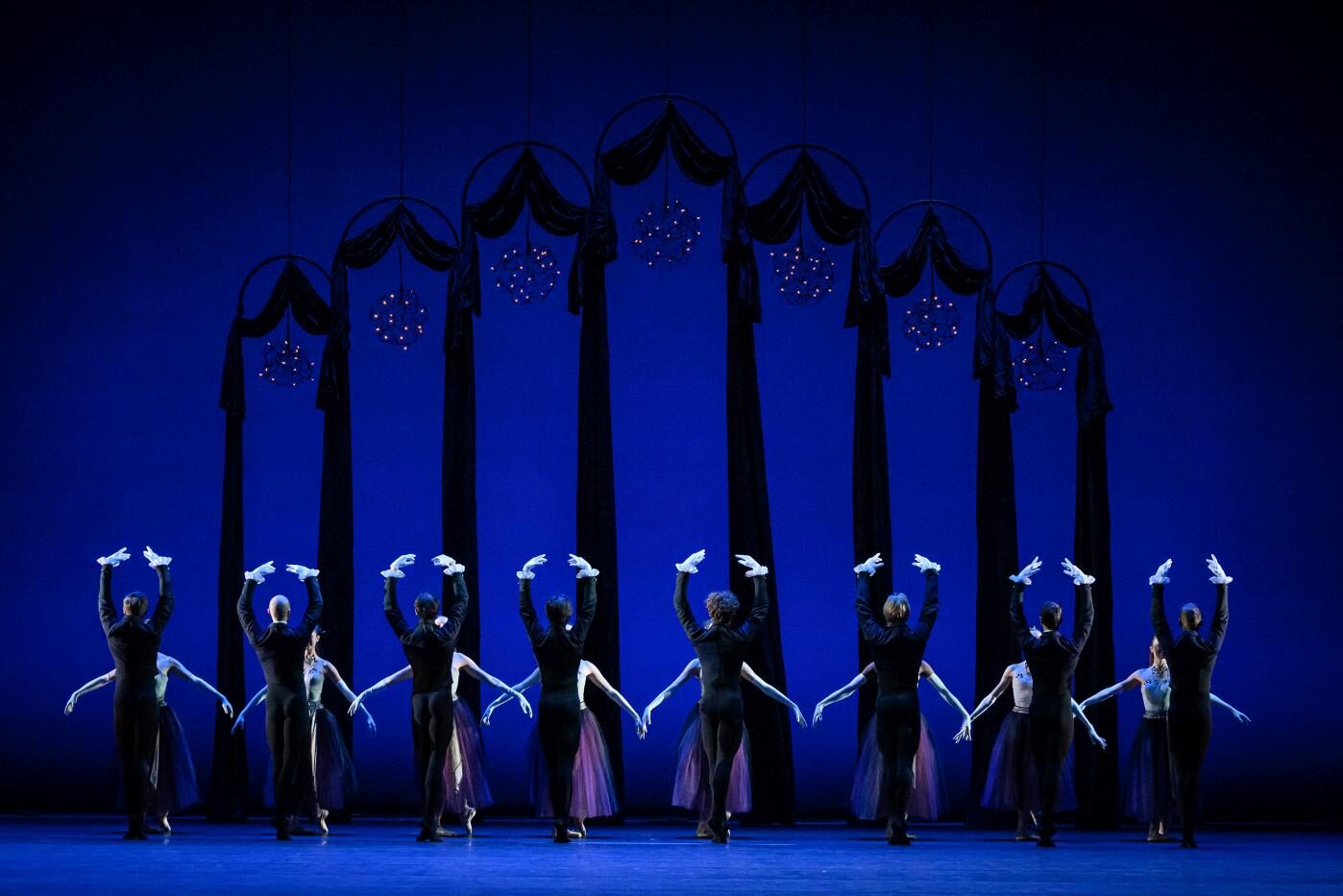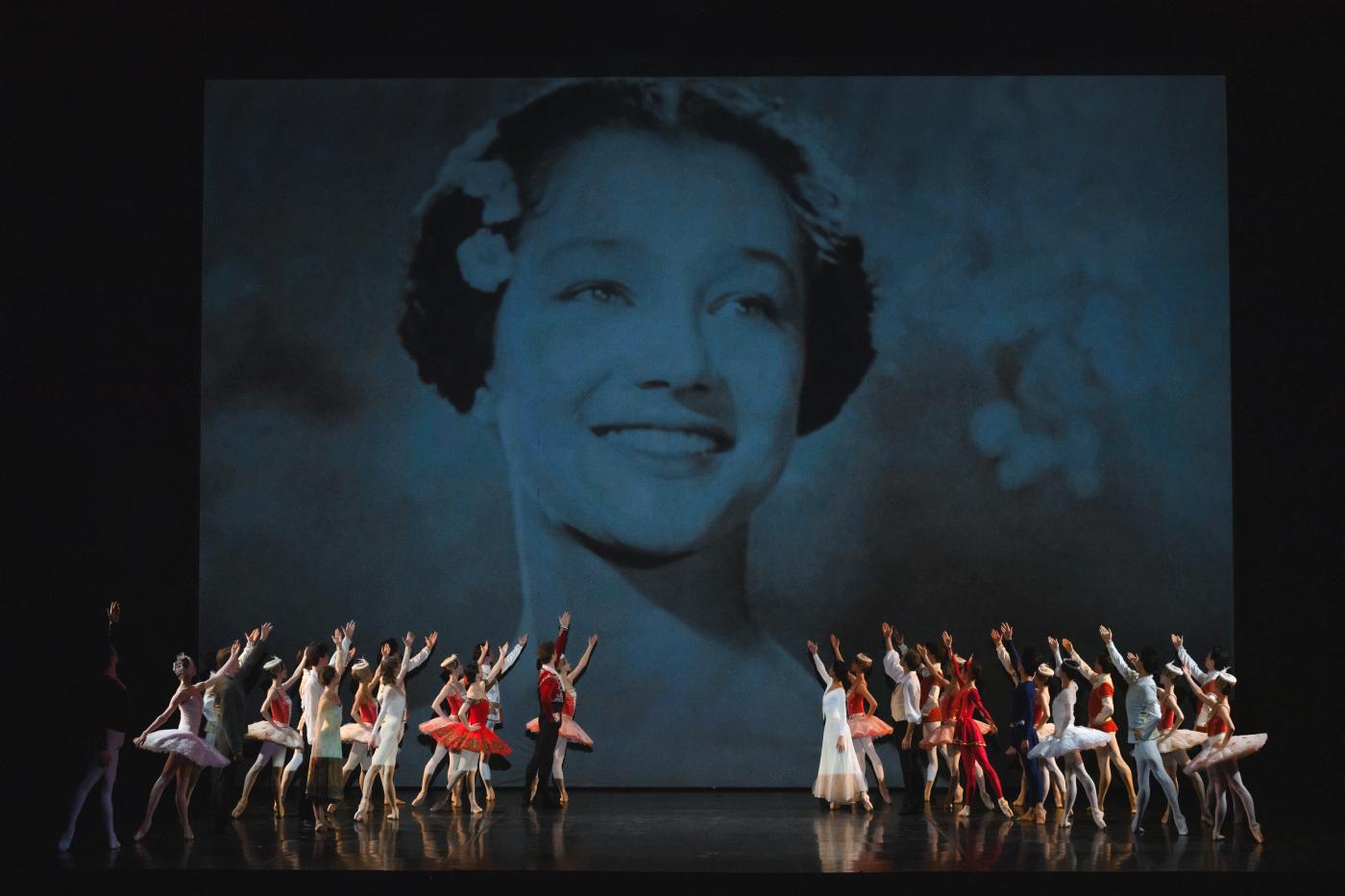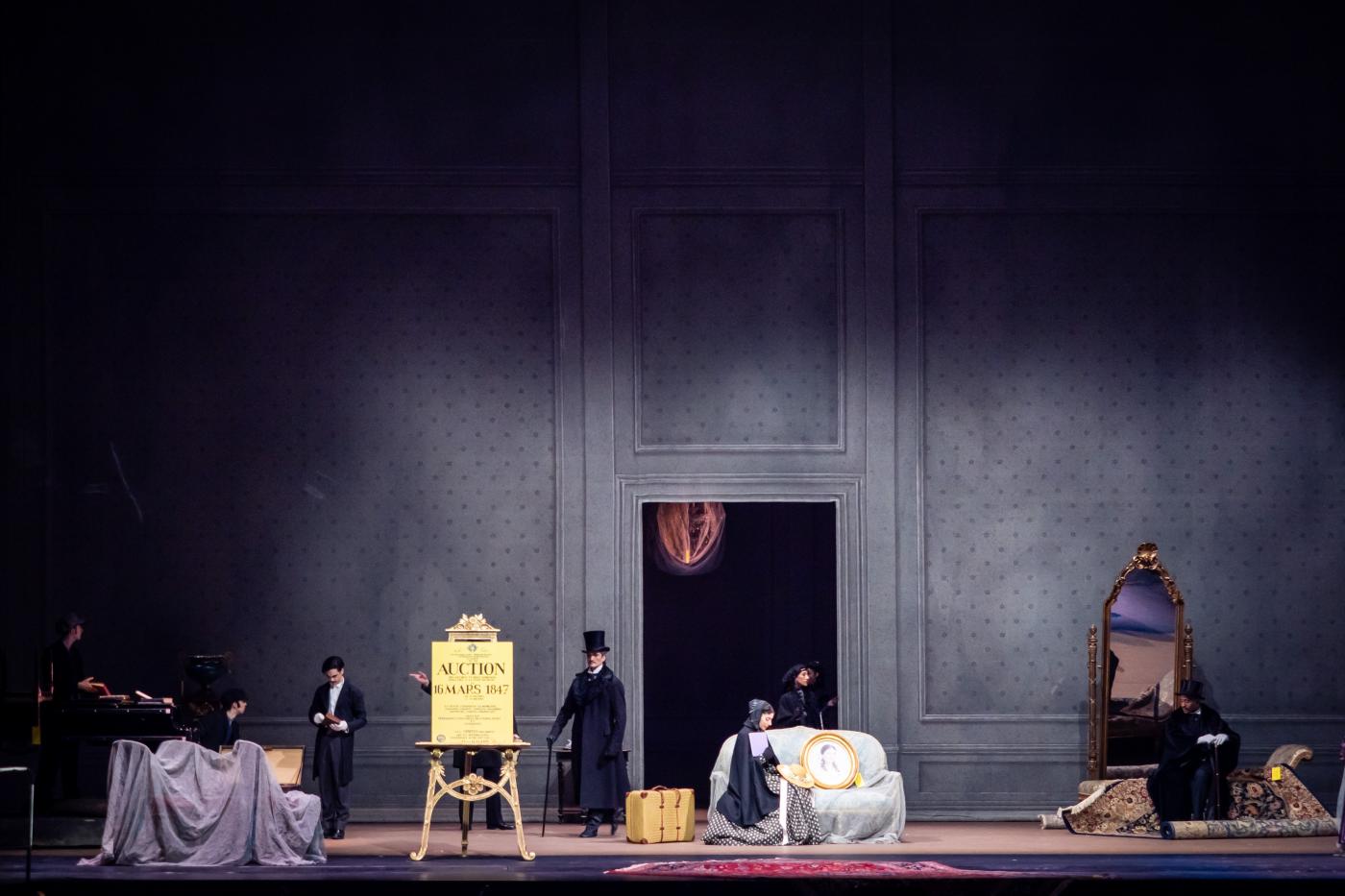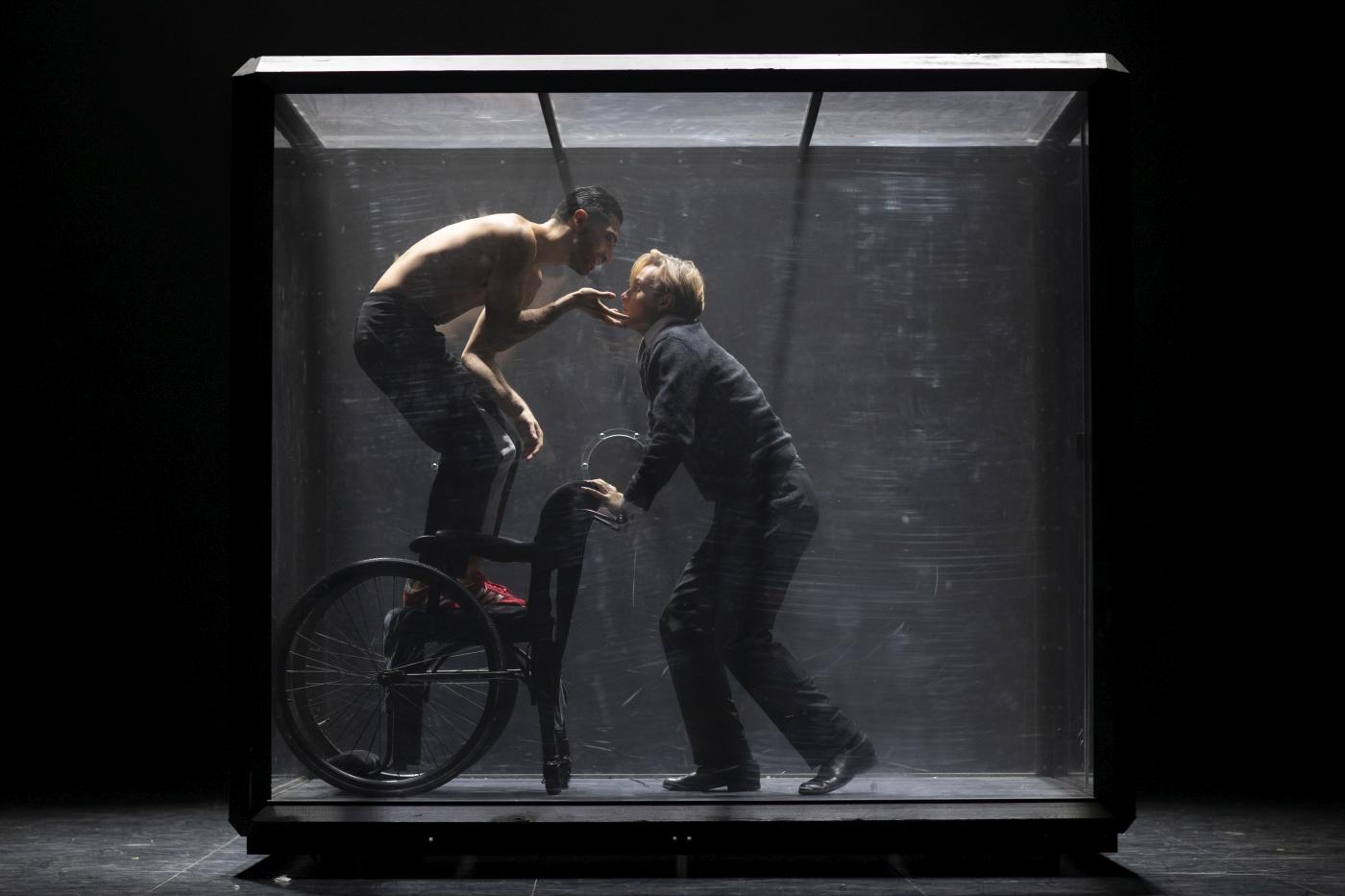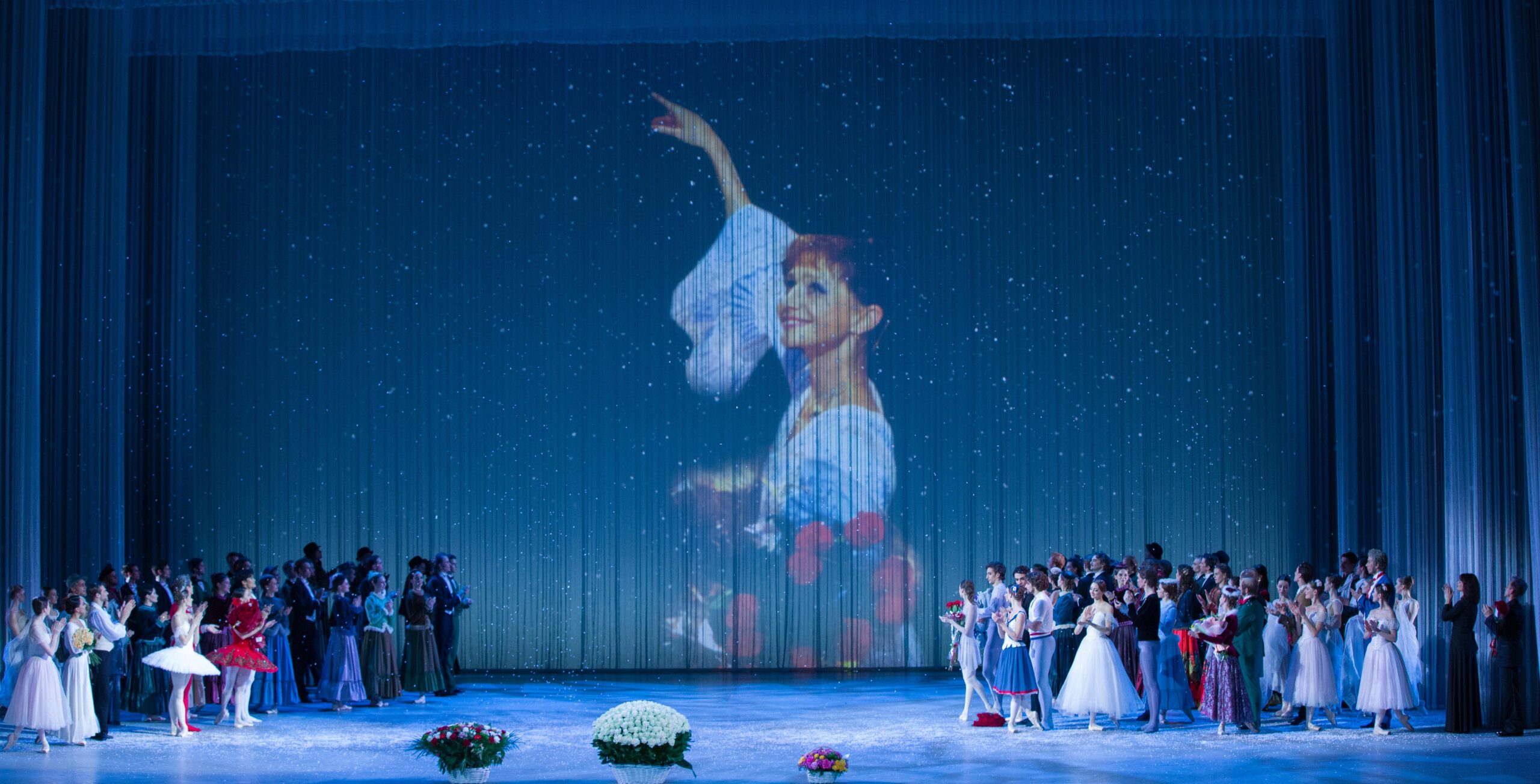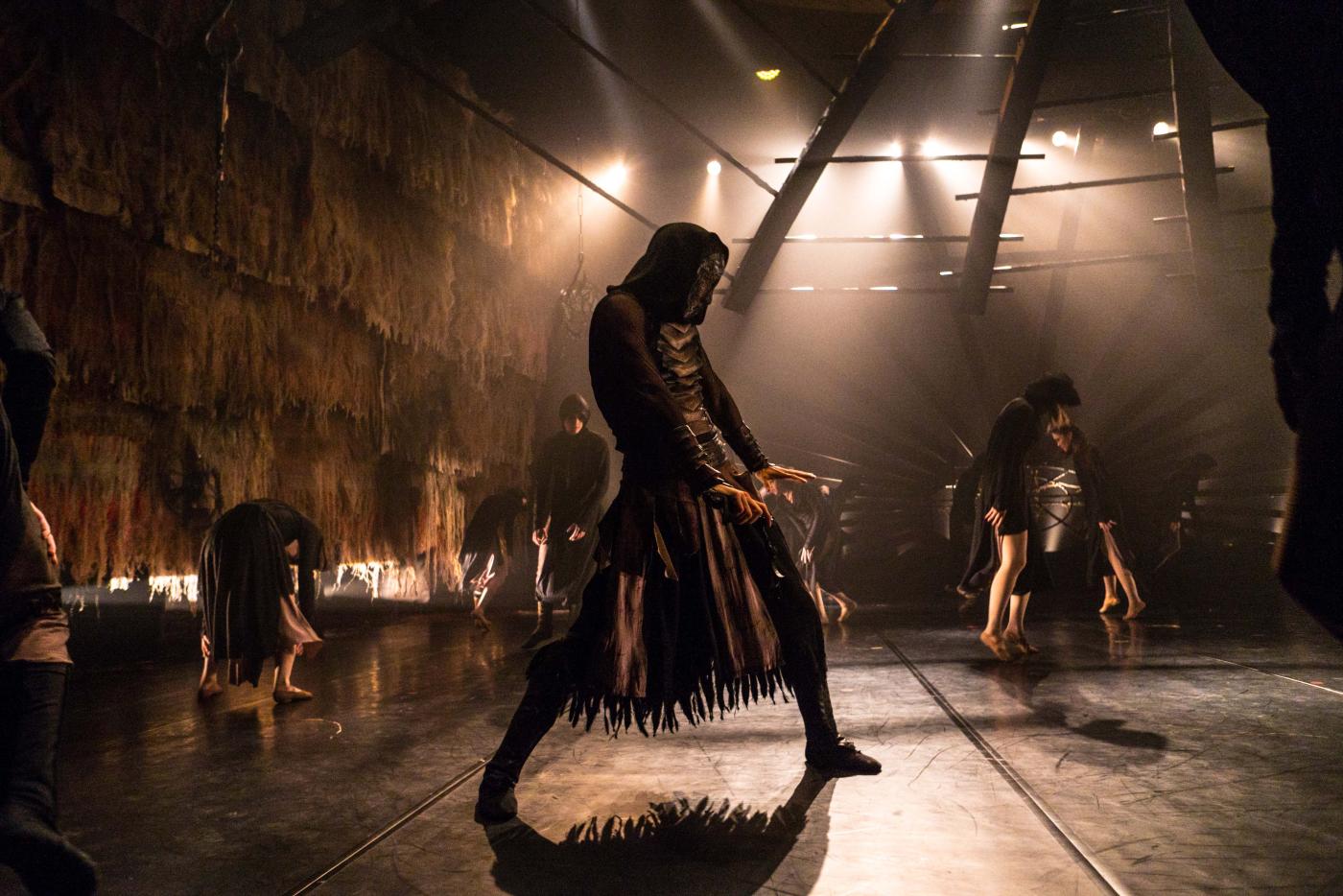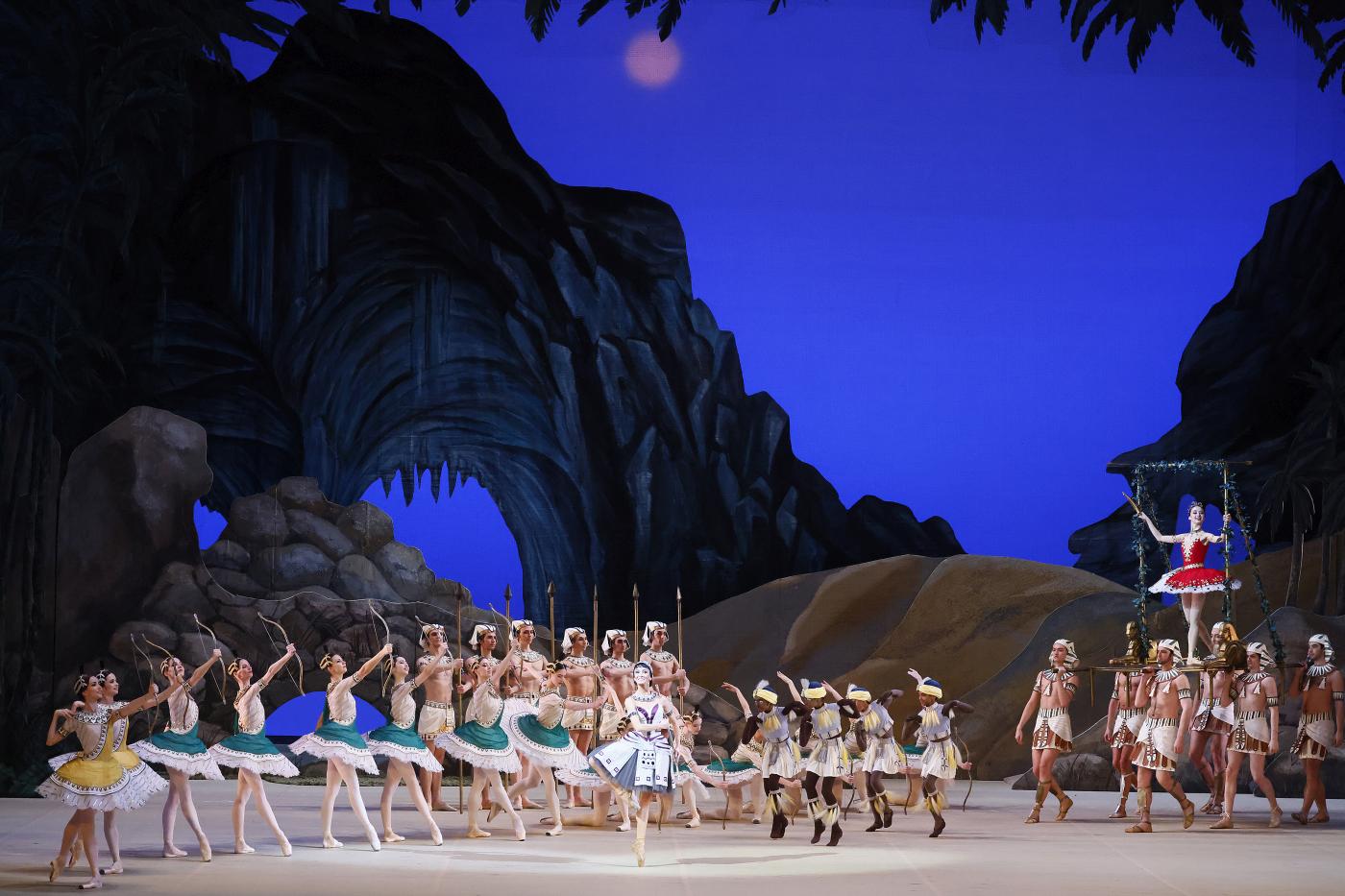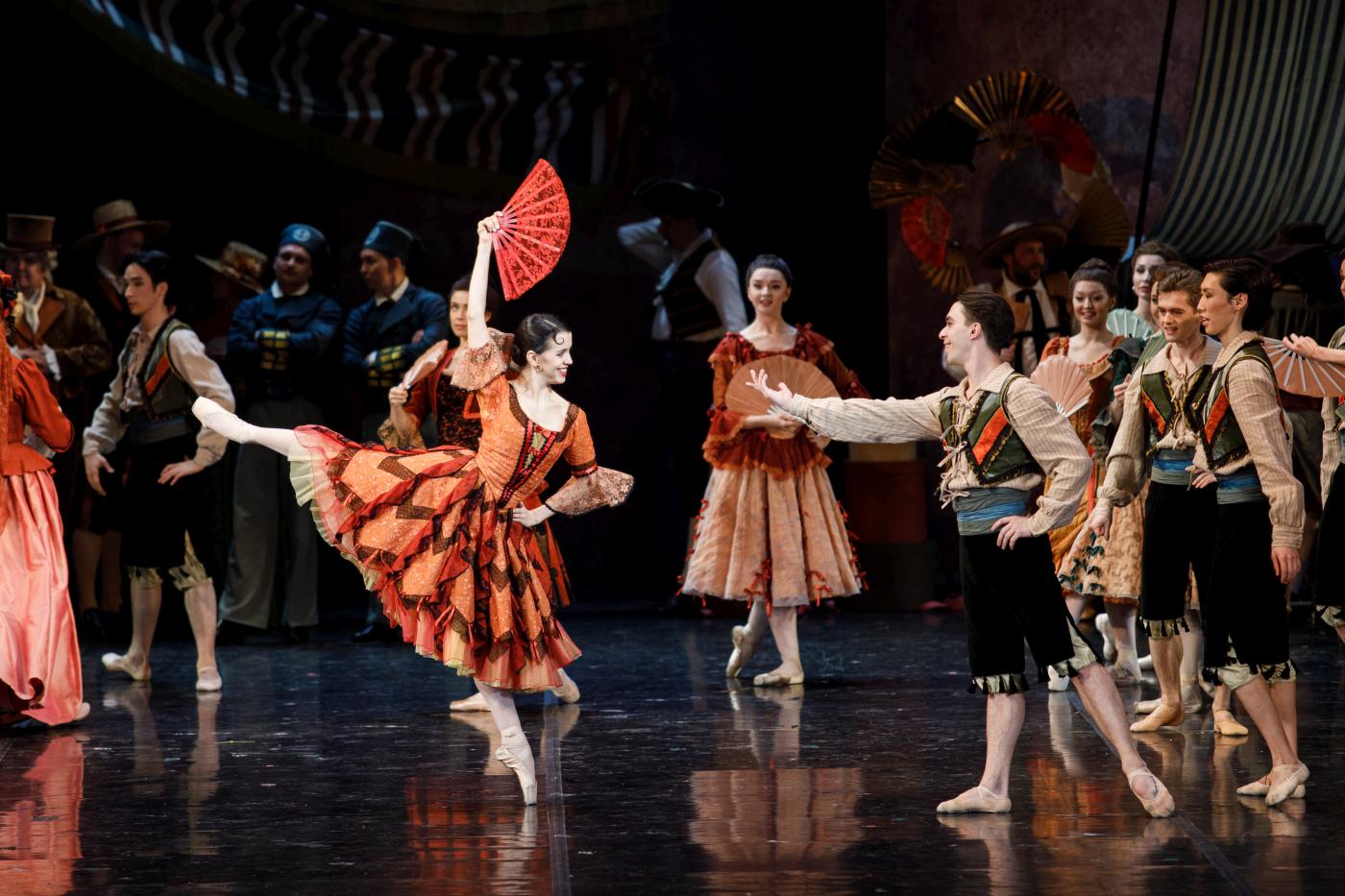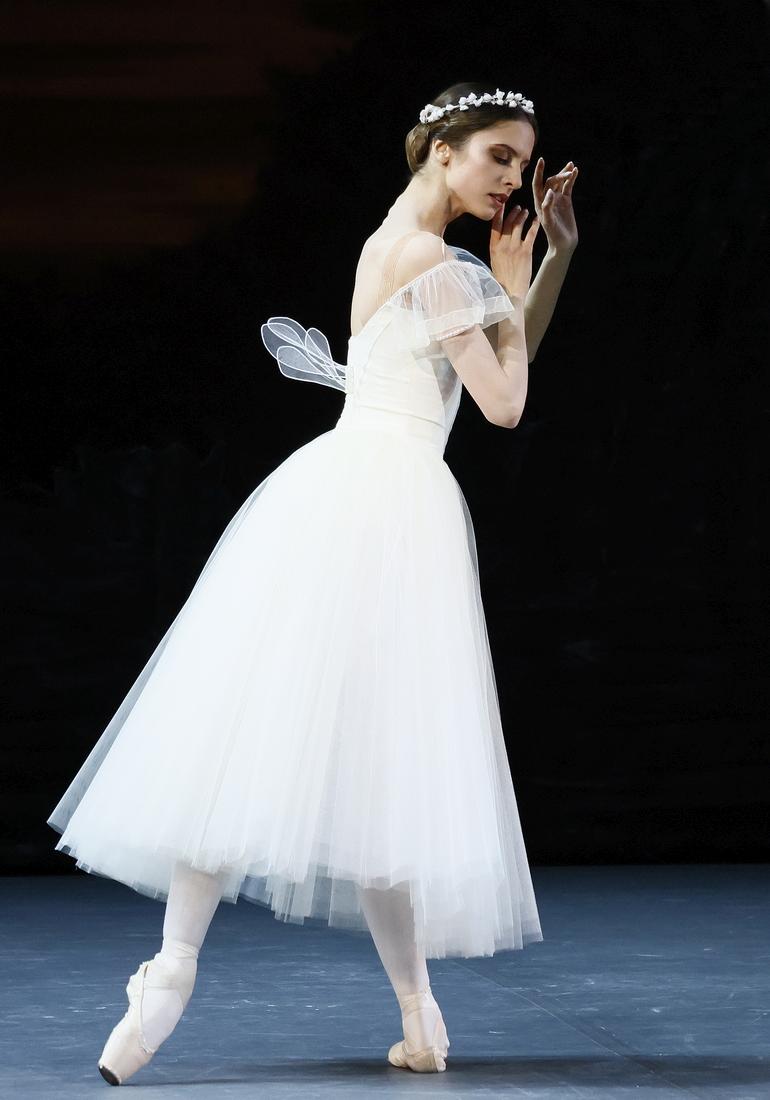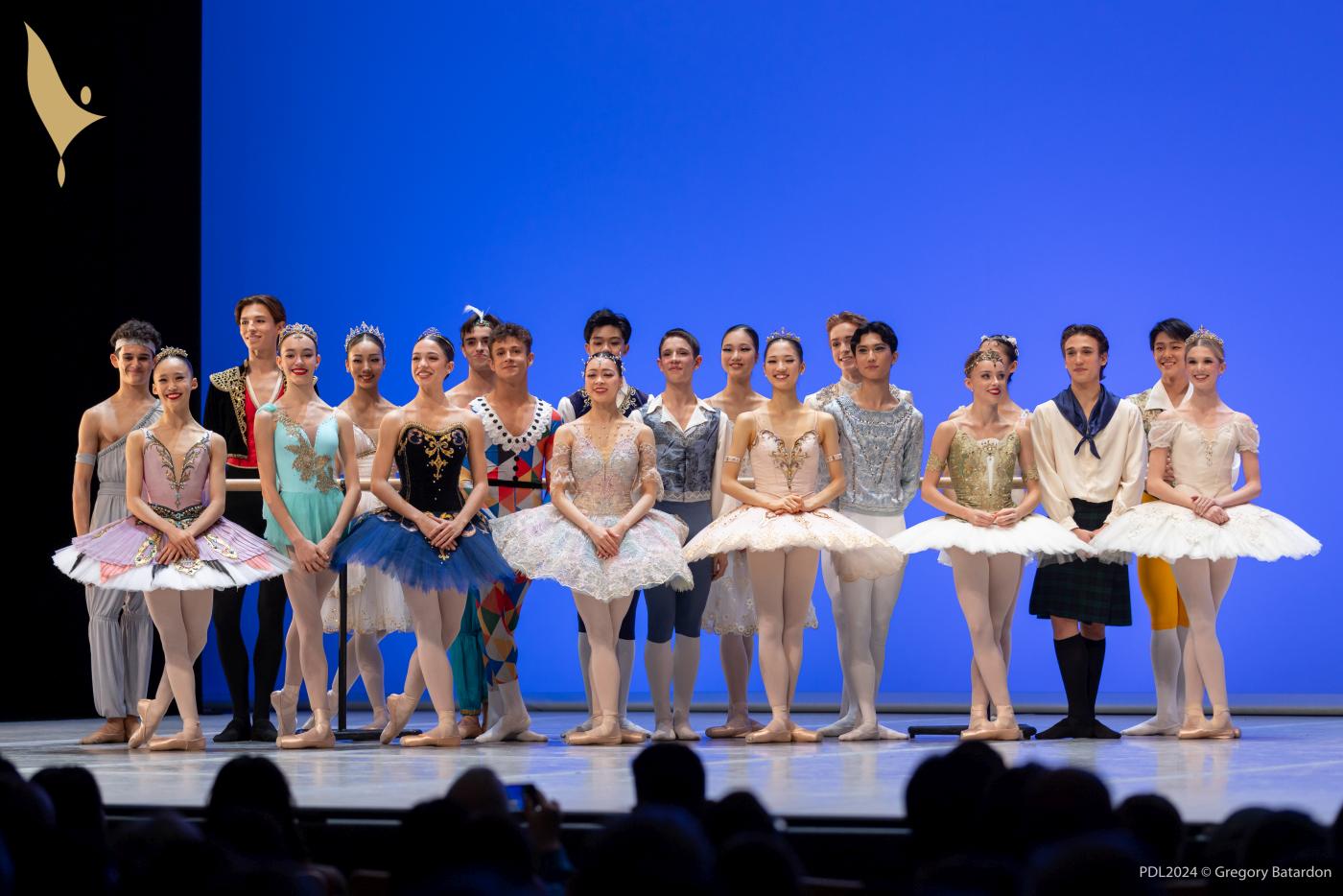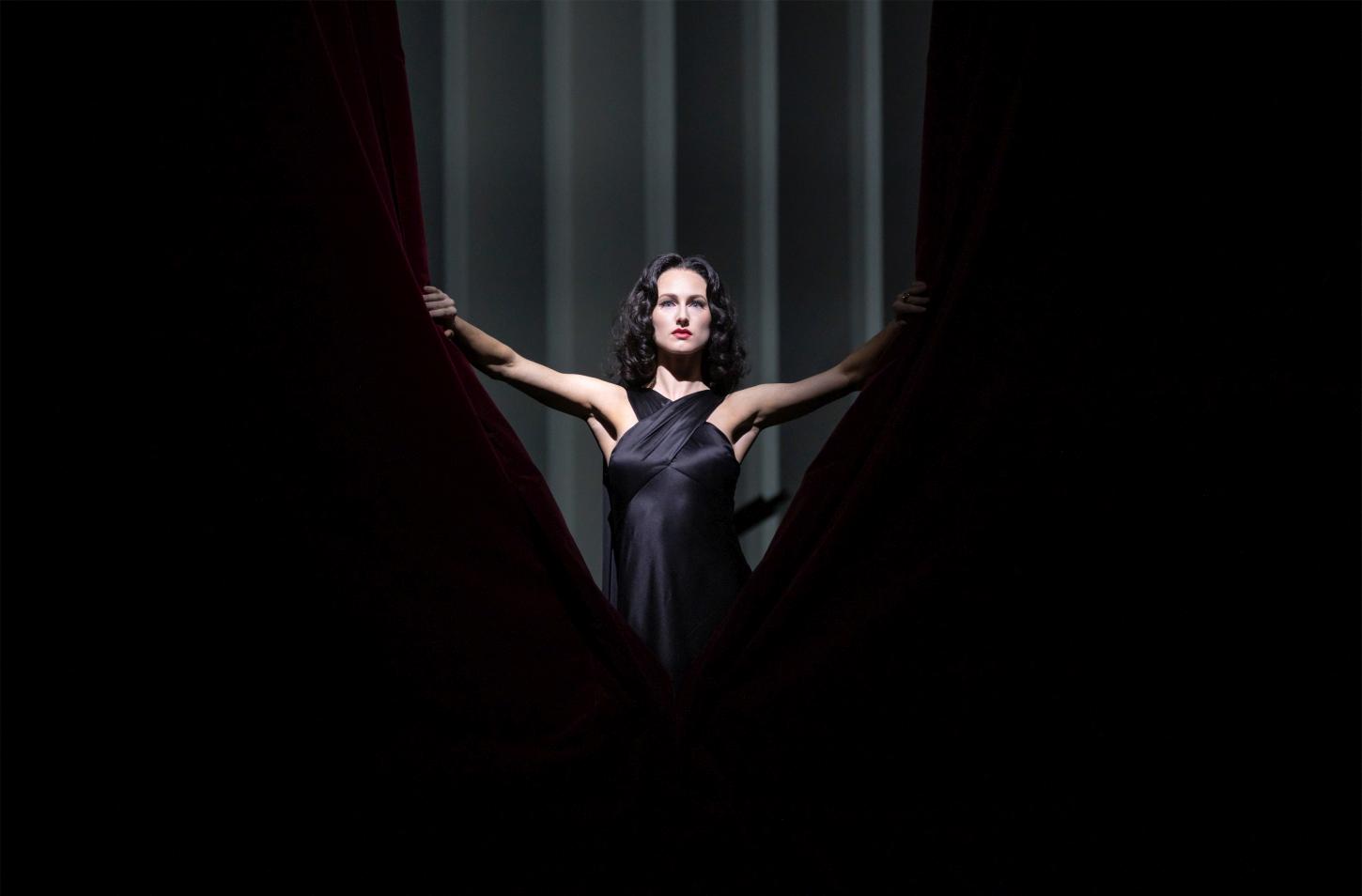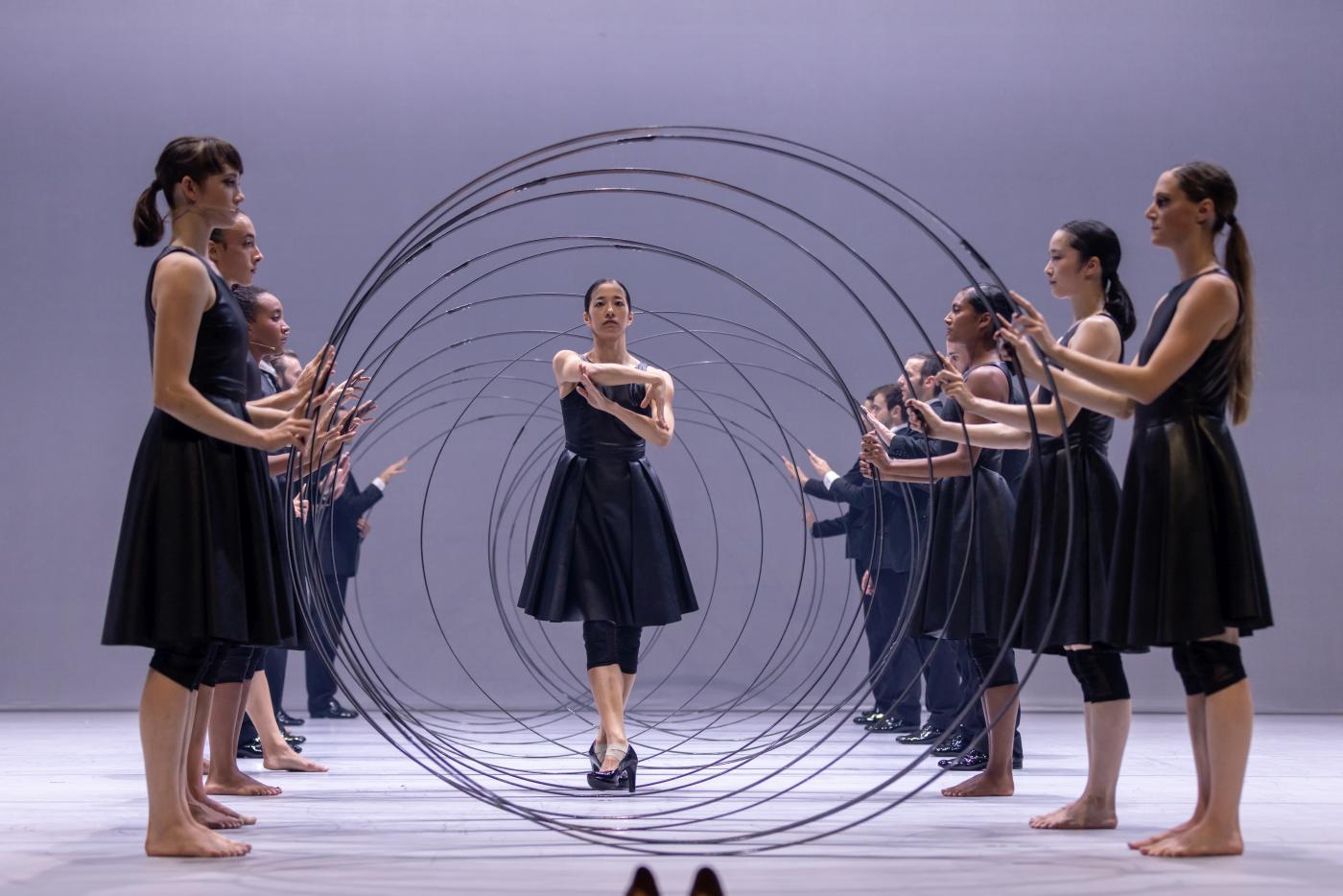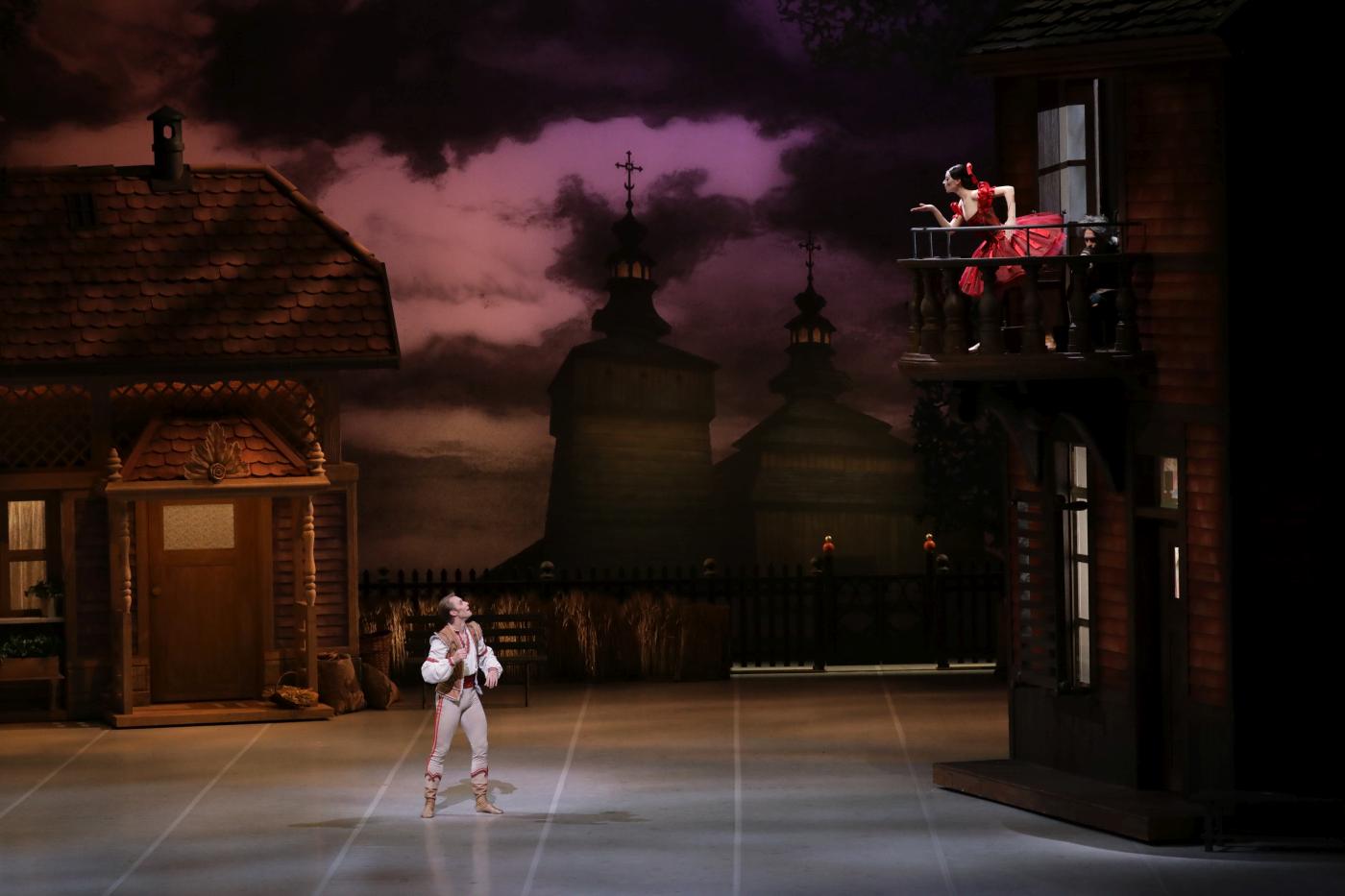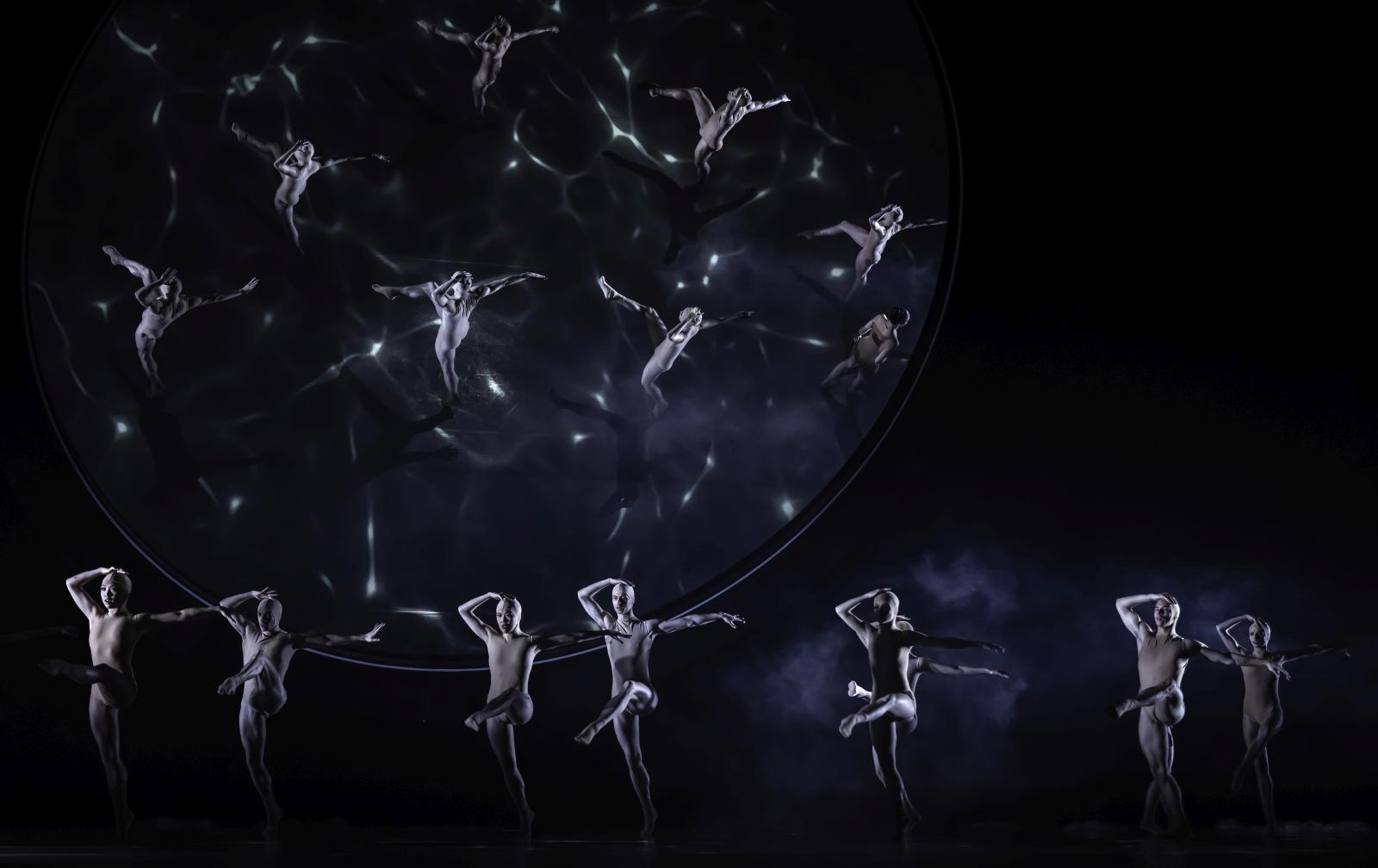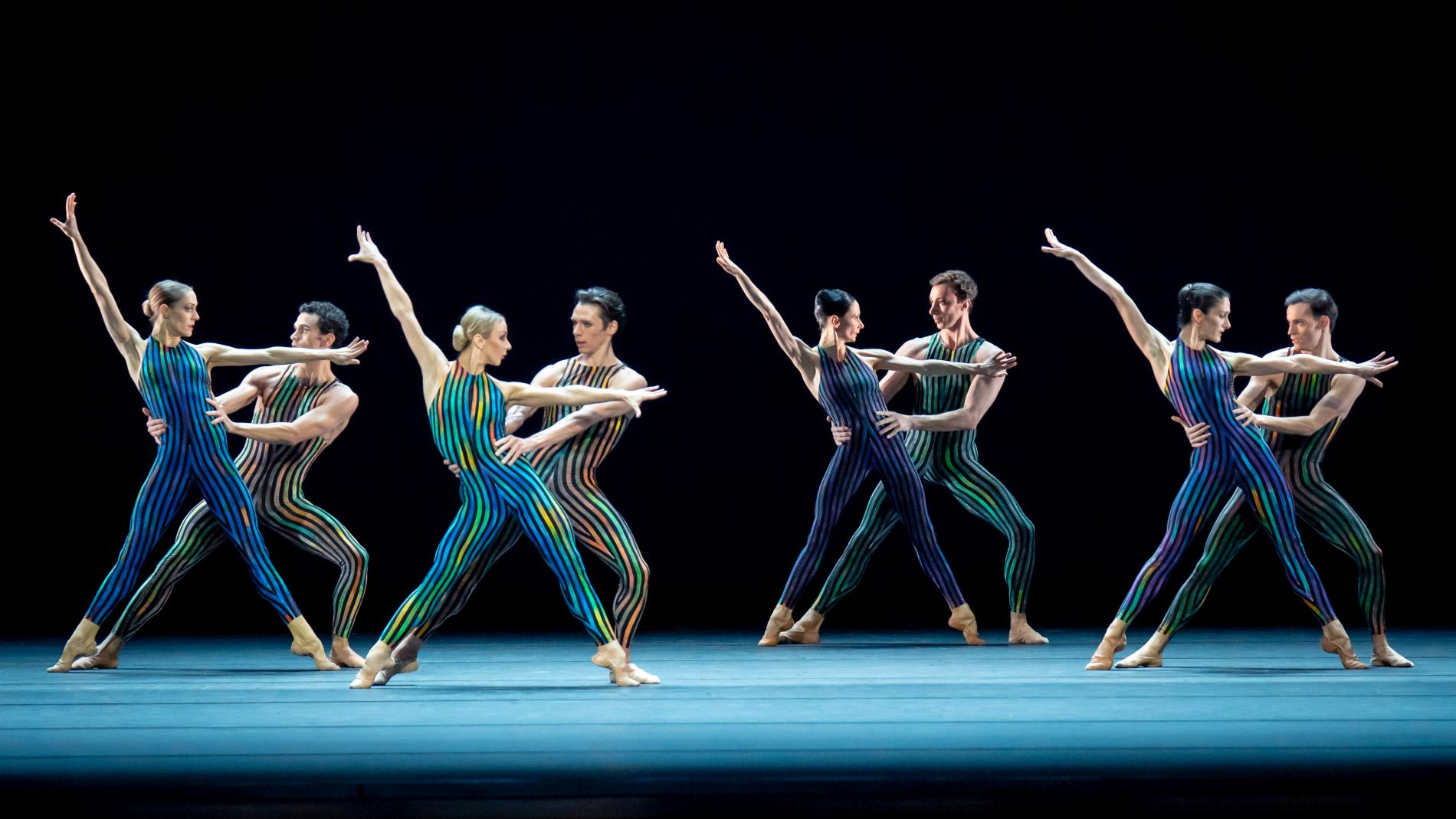Retrospects
“To the Point(e)” (“Within the Golden Hour”/“Autodance”/”Vers Un Pays Sage”)
Les Ballets de Monte-Carlo
Salle des Princes, Grimaldi Forum
Monte-Carlo, Monaco
April 27, 2024
by Ilona Landgraf
Copyright © 2024 by Ilona Landgraf
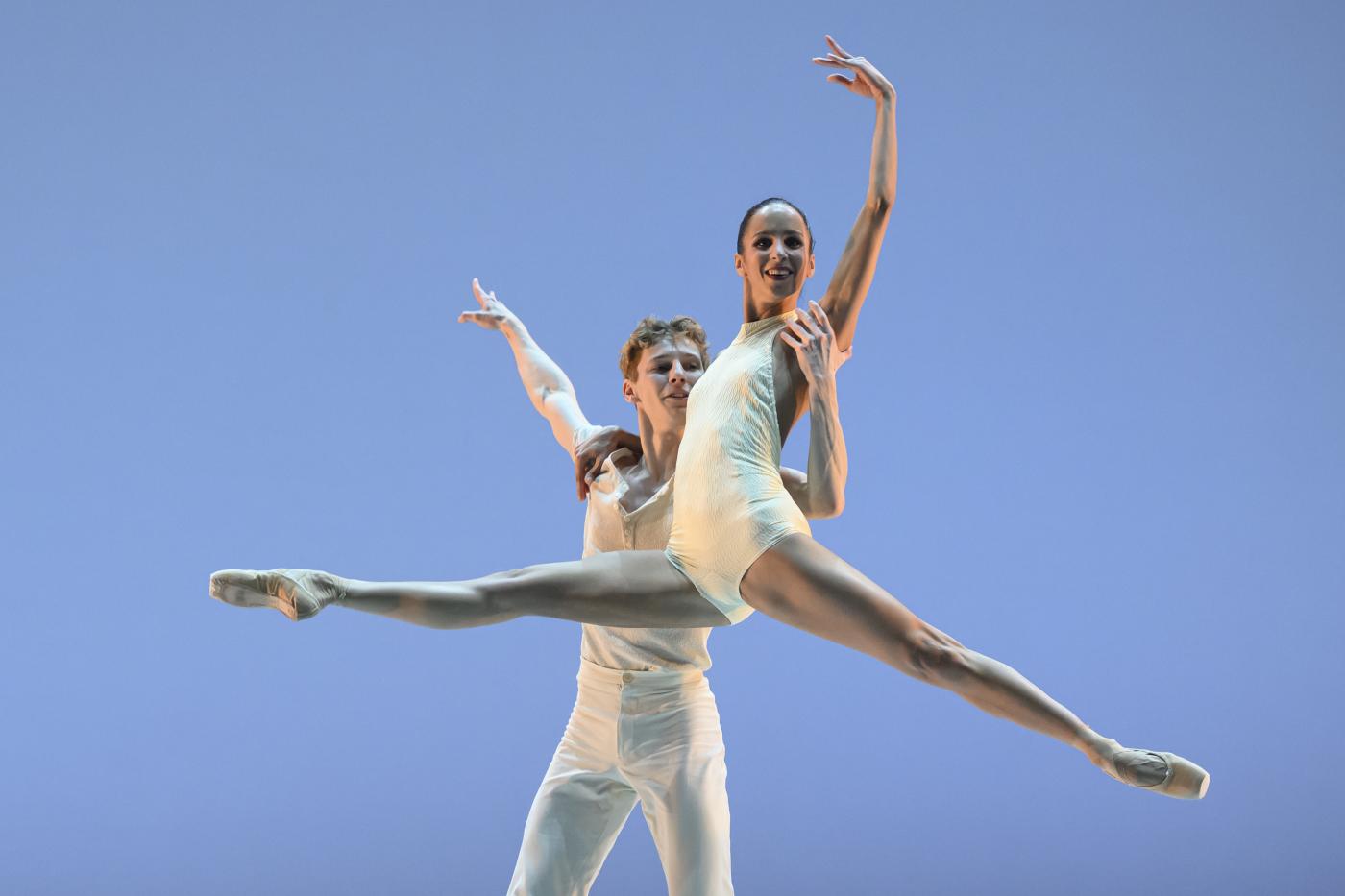 The new triple bill of Les Ballets de Monte-Carlo spans thirty or so years of ballet history. Its earliest ballet—Vers Un Pays Sage (1995)—is by the company’s artistic director, Jean-Christophe Maillot. Christopher Wheeldon’s Within the Golden Hour premiered in 2008 at the San Francisco Ballet. The most recent piece, Sharon Eyal’s and Gai Behar’s Autodance was created for the GöteborgsOperan in 2018.
The new triple bill of Les Ballets de Monte-Carlo spans thirty or so years of ballet history. Its earliest ballet—Vers Un Pays Sage (1995)—is by the company’s artistic director, Jean-Christophe Maillot. Christopher Wheeldon’s Within the Golden Hour premiered in 2008 at the San Francisco Ballet. The most recent piece, Sharon Eyal’s and Gai Behar’s Autodance was created for the GöteborgsOperan in 2018.
Vers Un Pays Sage (“To a Wise Country”) is a tribute to Maillot’s father, Jean, a professor of the fine arts, painter, and set and costume designer who died prematurely. Pays Sage was the title of his last exhibition. He has been described as a workaholic with an excessive zest for life, and I conclude from the ballet that he must have had an upbeat, bright nature, brimming full of spirit. Six men and six women successfully conveyed the energy of this fireball of an artist on stage, driven by the pulse of John Adam’s Fearful Symmetries.
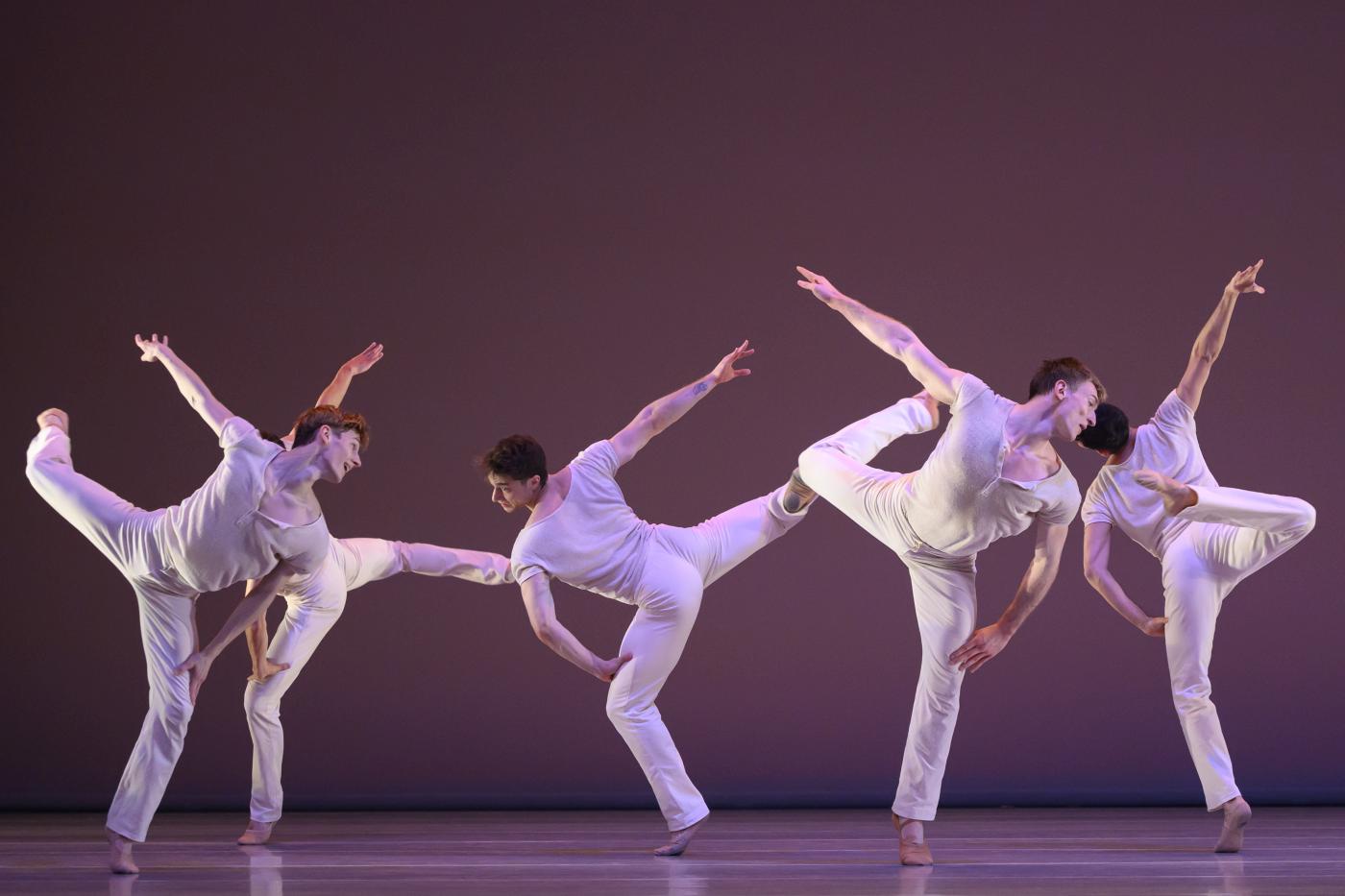
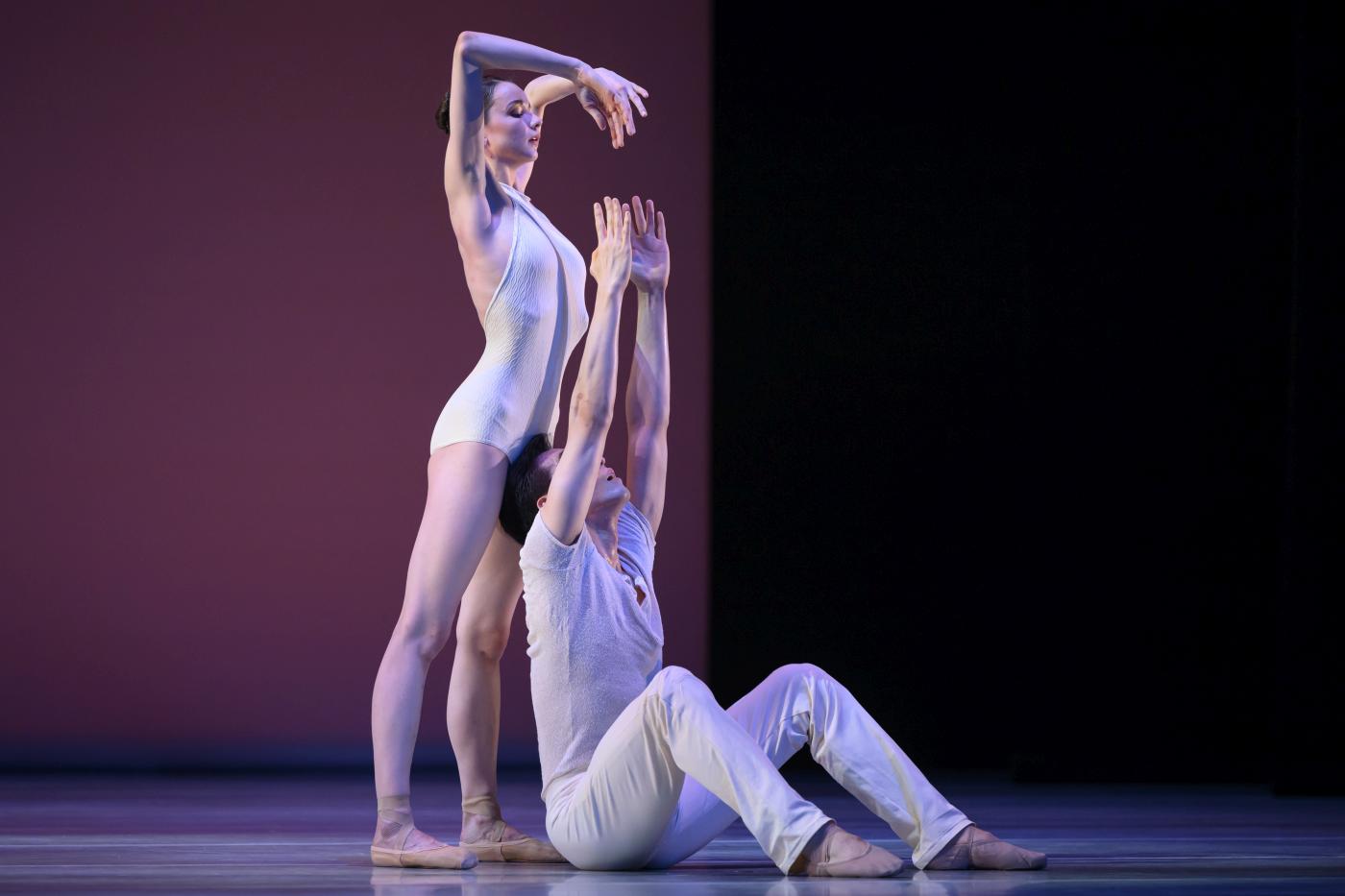 They sped through the breezy choreography like inexhaustible dynamos, frantically accelerating the pace toward the end as if to squeeze as much as possible into the limited time. Every minute felt fresh and crisp. Many interactions between the dancers demonstrated a dense social network juggled by Jean. They dragged one another across the stage, caught each other’s hands on the run, safeguarded precarious balances, and, holding hands, leaned away from each other as if to test the stability of their relations. Sometimes a couple or group waited motionless for their cue while others buzzed across the stage. When the time was ripe, they sprung into action.
They sped through the breezy choreography like inexhaustible dynamos, frantically accelerating the pace toward the end as if to squeeze as much as possible into the limited time. Every minute felt fresh and crisp. Many interactions between the dancers demonstrated a dense social network juggled by Jean. They dragged one another across the stage, caught each other’s hands on the run, safeguarded precarious balances, and, holding hands, leaned away from each other as if to test the stability of their relations. Sometimes a couple or group waited motionless for their cue while others buzzed across the stage. When the time was ripe, they sprung into action.
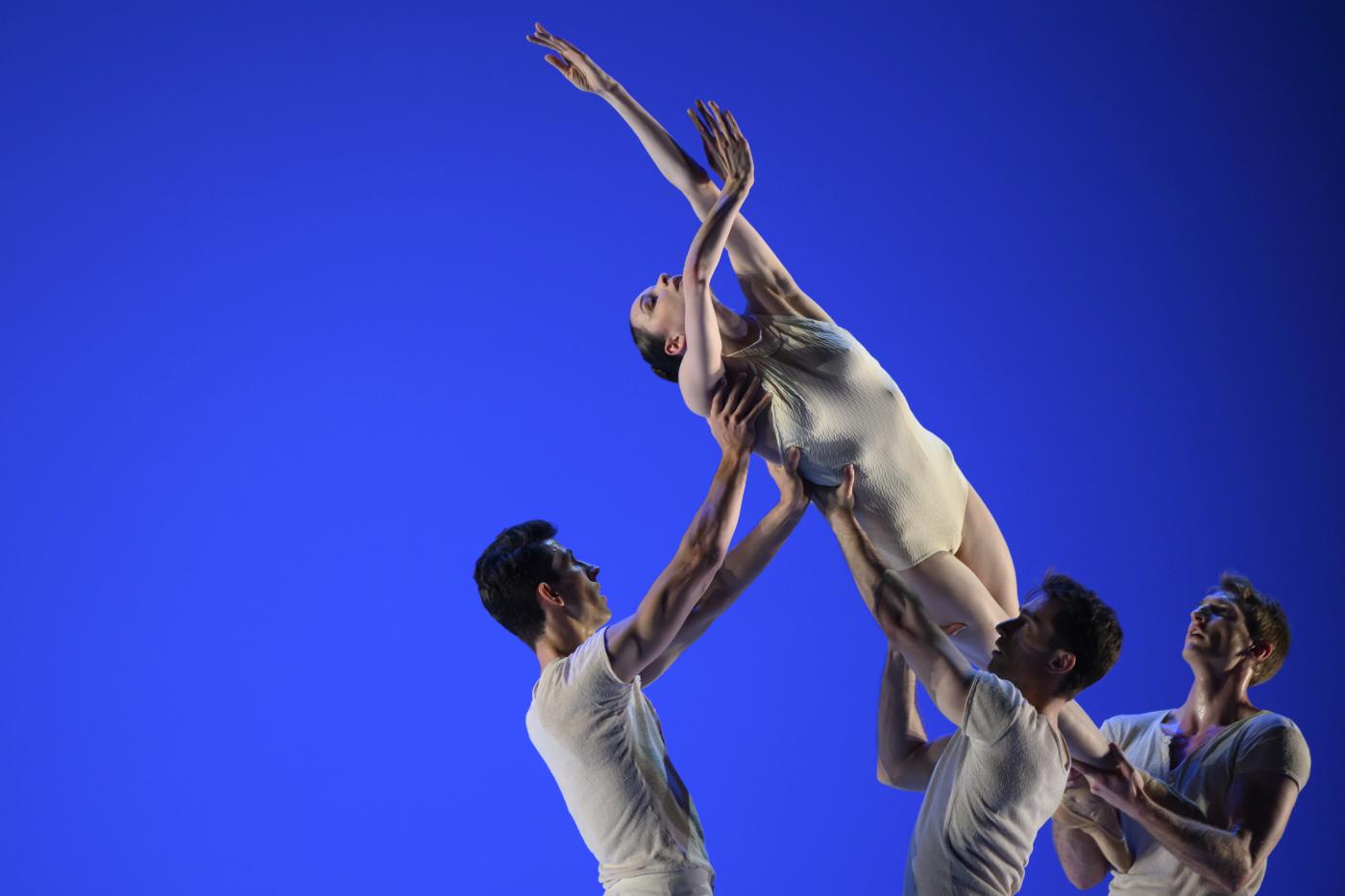
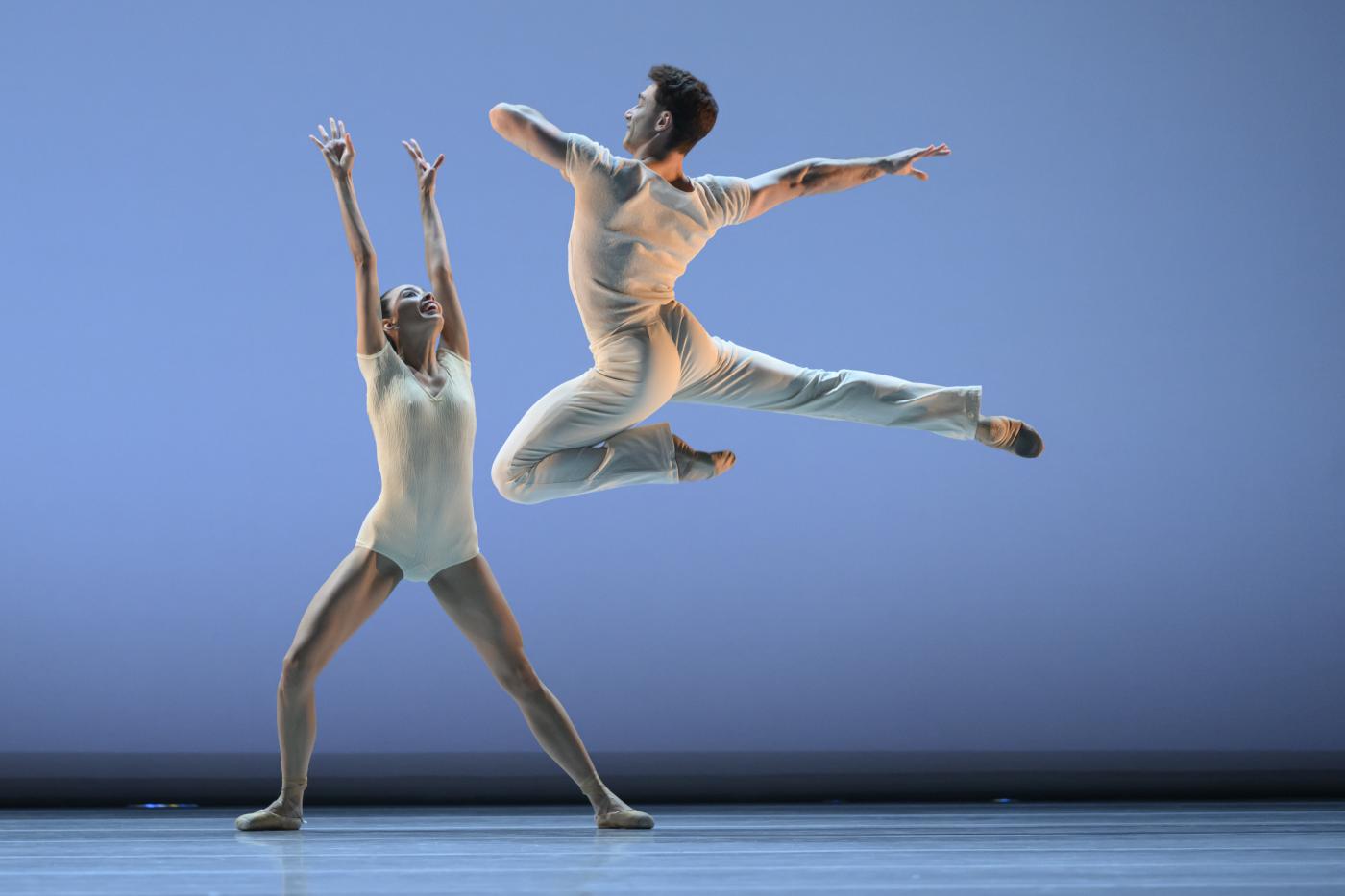 As the music struck its final strokes, one of Jean Maillot’s paintings was lowered from above. The last couple left on stage slowly merged with the landscape scenery of the painting. They looked exhausted but left a lasting legacy.
As the music struck its final strokes, one of Jean Maillot’s paintings was lowered from above. The last couple left on stage slowly merged with the landscape scenery of the painting. They looked exhausted but left a lasting legacy.
The colors, light, and the use of gold in Gustav Klimt’s paintings inspired Wheeldon to “embark on a journey creating fleeting moments“ that resulted in Within the Golden Hour. Each of its scenes conveys a different mood, ranging from ceremonial to cheeky, static to dynamic, and aggressive to devoted.
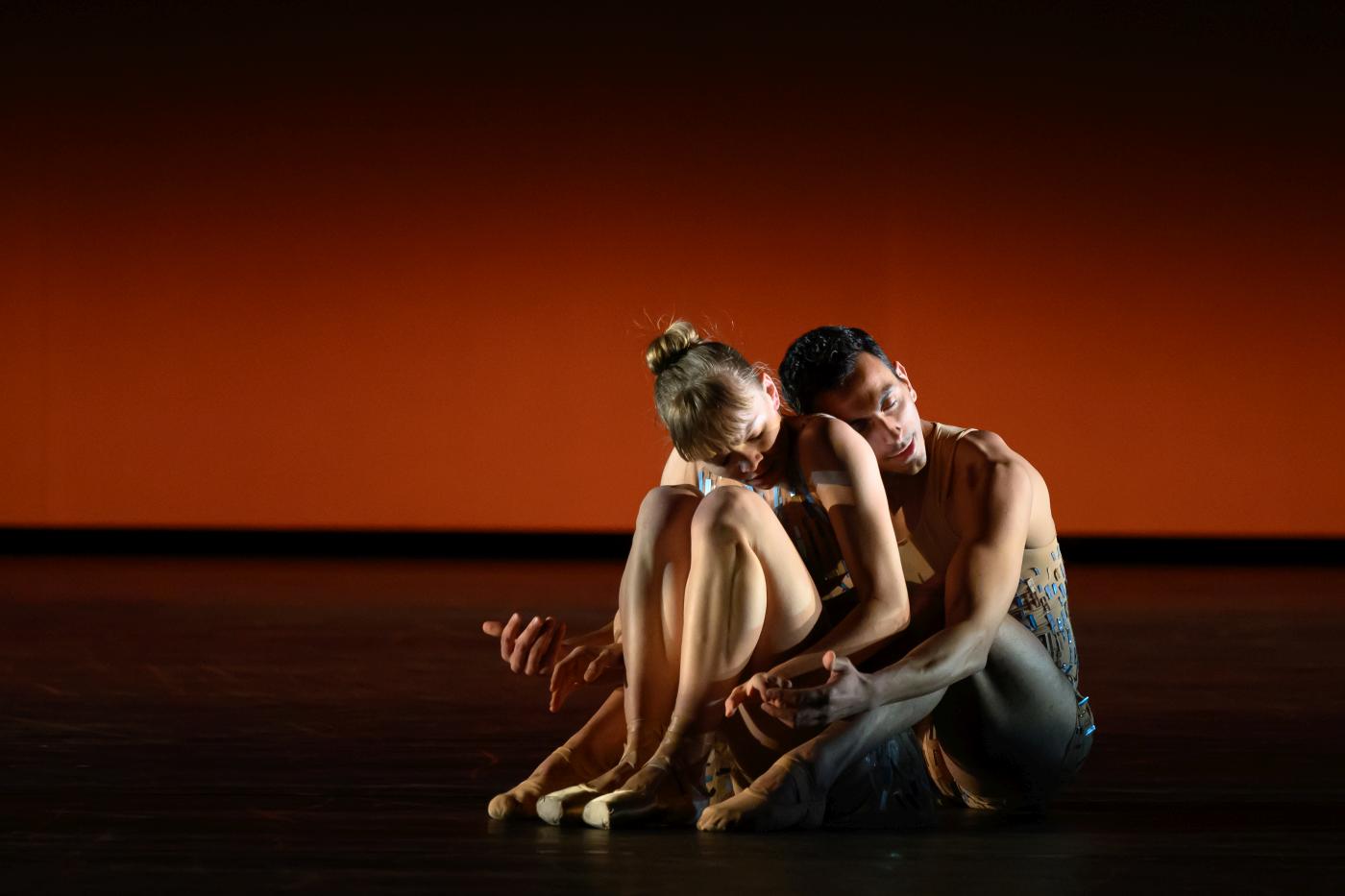
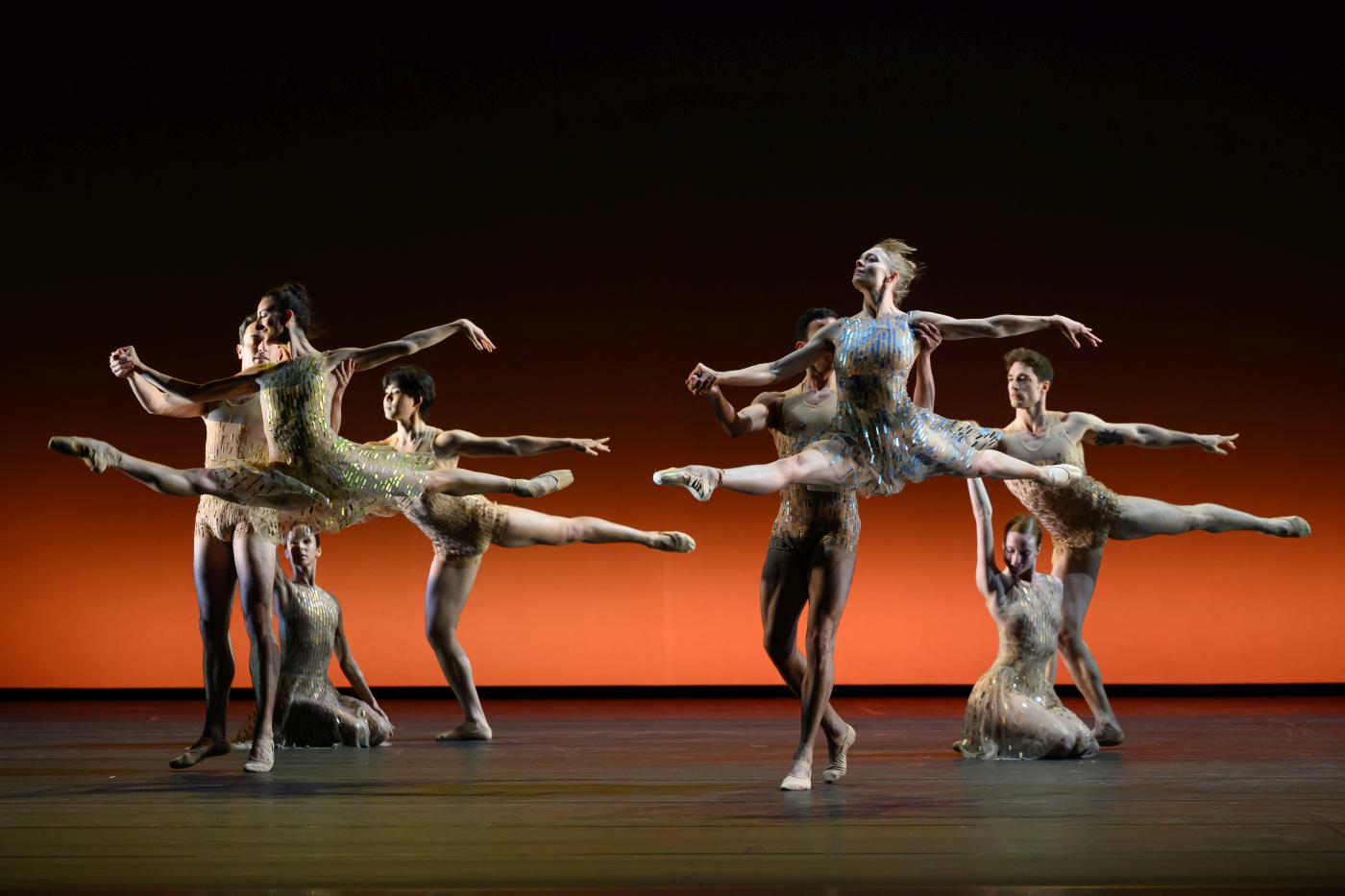 Monochromatic or dual-colored backdrops contrasted effectively with the gold-turquoise glitter on the skin-colored costumes (costume design by Jasper Conran). Though initially interesting, the choreography (involving seven men and seven women) was soon as bland as the repetitive melodies of Ezio Bosso. Wheeldon intended a ballet that was entirely beautiful, and, undoubtedly, beauty is in the eye of the beholder. For me, Within the Golden Hour was too well-rounded, too pleasing, all in all featureless, and a lullaby to the mind.
Monochromatic or dual-colored backdrops contrasted effectively with the gold-turquoise glitter on the skin-colored costumes (costume design by Jasper Conran). Though initially interesting, the choreography (involving seven men and seven women) was soon as bland as the repetitive melodies of Ezio Bosso. Wheeldon intended a ballet that was entirely beautiful, and, undoubtedly, beauty is in the eye of the beholder. For me, Within the Golden Hour was too well-rounded, too pleasing, all in all featureless, and a lullaby to the mind.
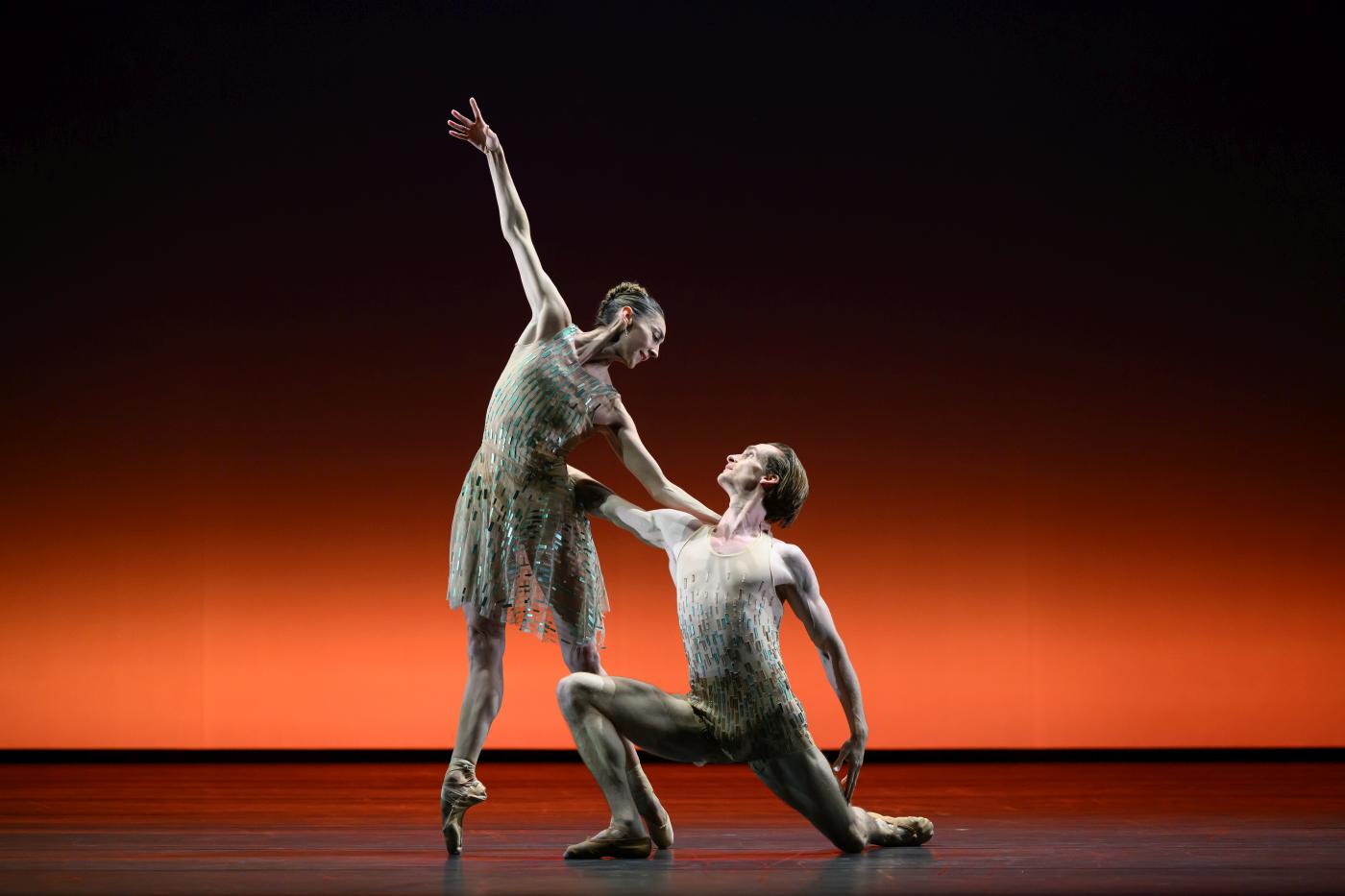
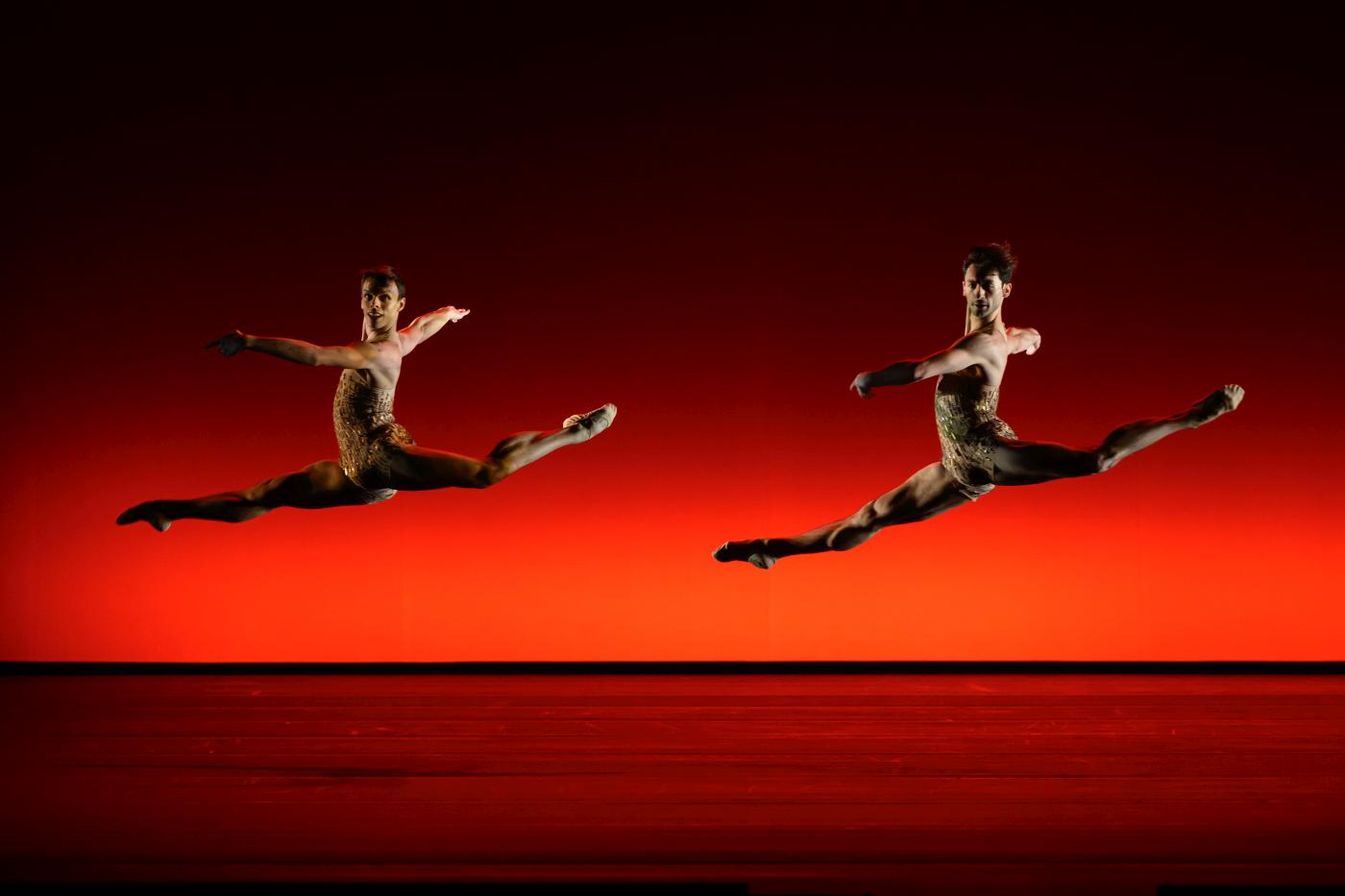 The throbbing noise that heralded Autodance (composition by Ori Lichtik) boded ill, but Eyal and Behar’s choreography surpassed my worst expectations. For more than half an hour, fourteen dancers strode or scurried on demi-pointe as if on a catwalk reserved for outlandish beings. With each step, their shoulders gyrated awkwardly; bland gazes belied their humanity. Their interactions were sparse, but the dancers followed the rhythm in lockstep. For a long time, they walked clockwise in a rectangle before they lined up and scattered across the stage. Their hands often stayed fixed to the torso, were held behind the back and above the head, or stroked the body in an act of lewd narcissism.
The throbbing noise that heralded Autodance (composition by Ori Lichtik) boded ill, but Eyal and Behar’s choreography surpassed my worst expectations. For more than half an hour, fourteen dancers strode or scurried on demi-pointe as if on a catwalk reserved for outlandish beings. With each step, their shoulders gyrated awkwardly; bland gazes belied their humanity. Their interactions were sparse, but the dancers followed the rhythm in lockstep. For a long time, they walked clockwise in a rectangle before they lined up and scattered across the stage. Their hands often stayed fixed to the torso, were held behind the back and above the head, or stroked the body in an act of lewd narcissism.
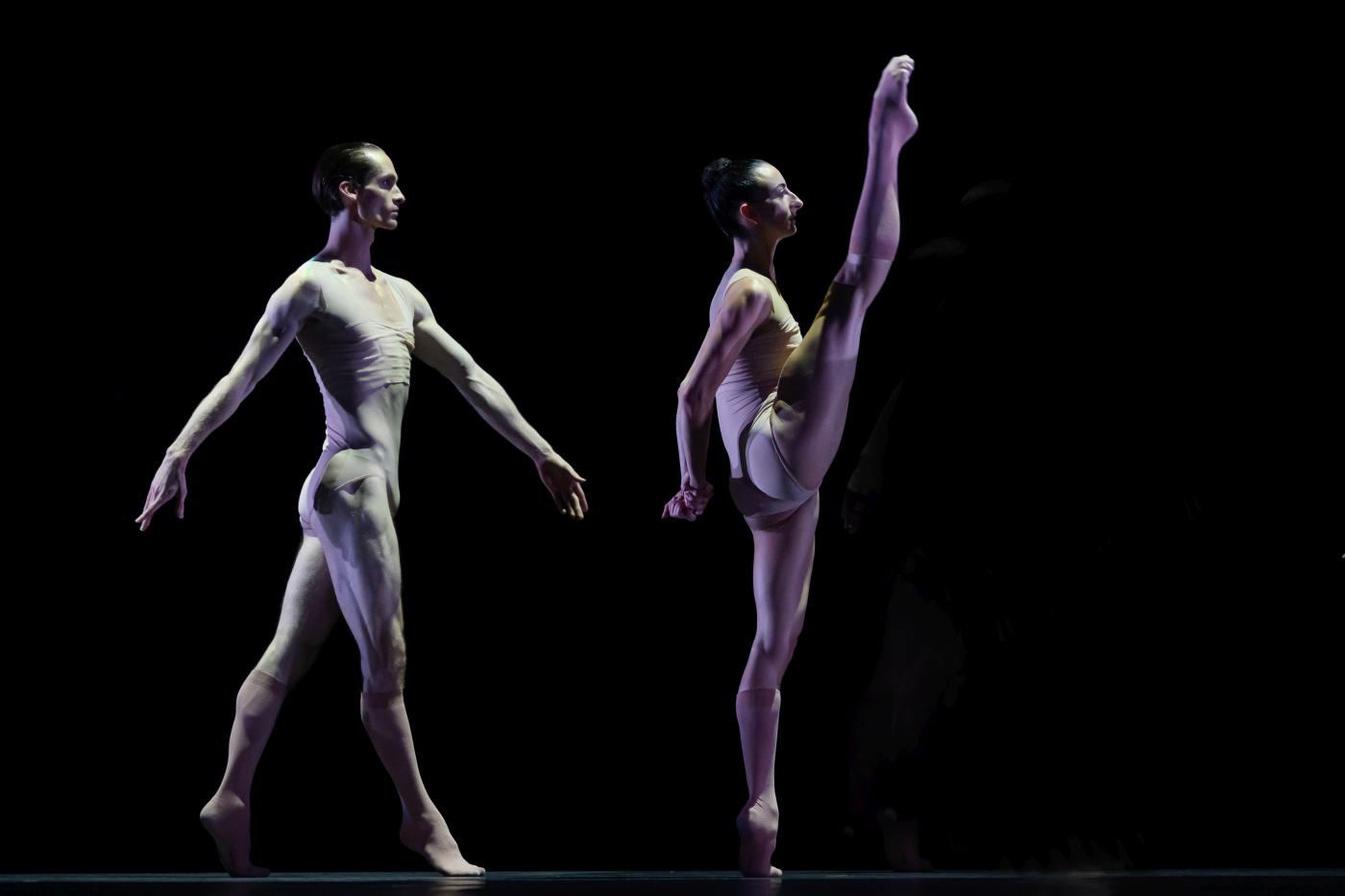
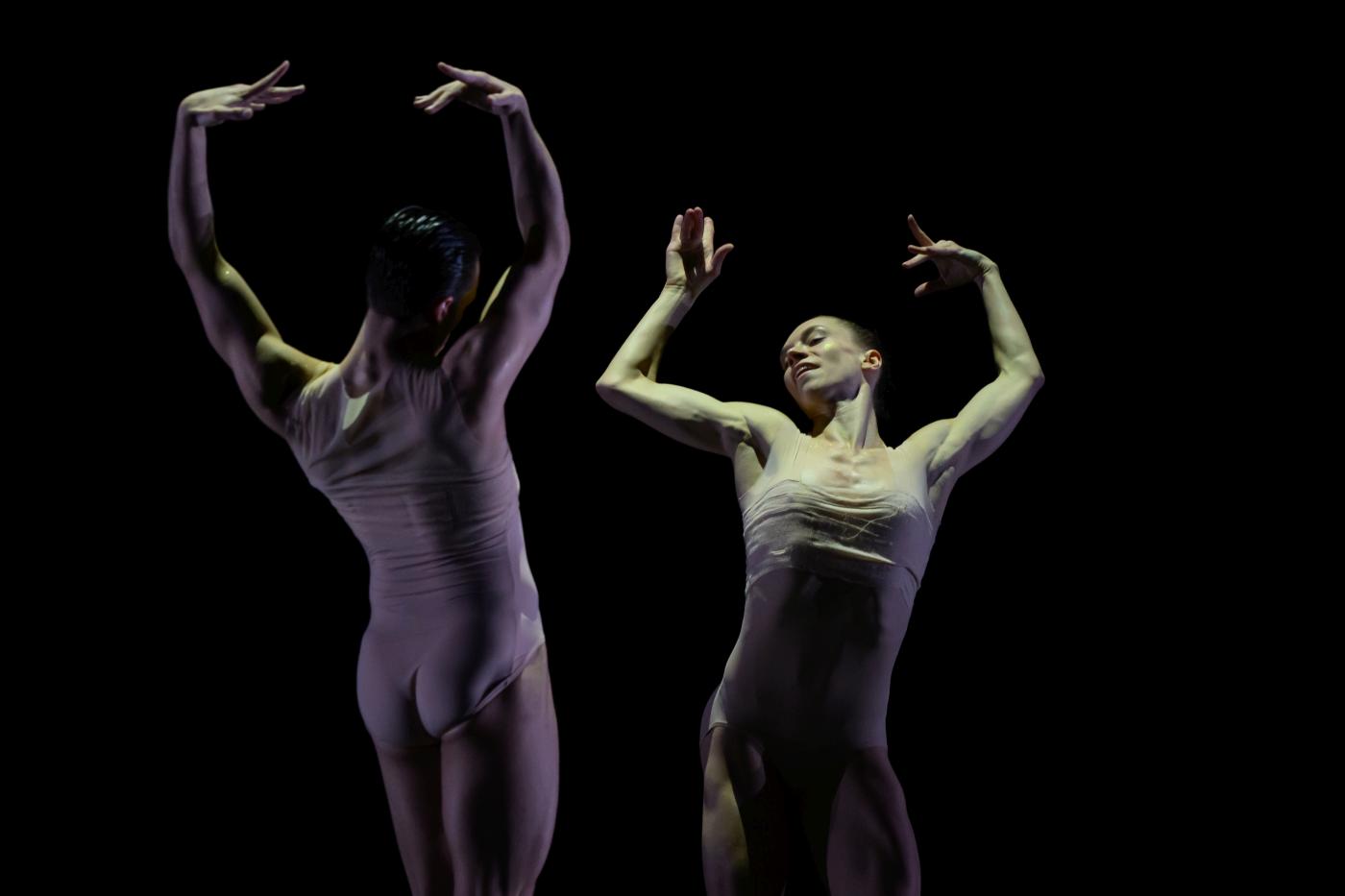 One woman kept her fingers at the crook of her arm as if to feel her pulse. Their movements exploited ironclad muscular force but looked controlled by an external power. Chests contorted, and hips thrust forward as if tortured with electroshocks.
One woman kept her fingers at the crook of her arm as if to feel her pulse. Their movements exploited ironclad muscular force but looked controlled by an external power. Chests contorted, and hips thrust forward as if tortured with electroshocks.
Though strapless, skin-colored tricots attempted to blur gender identities, it was obvious that the dancer who mimicked female mannerisms with feverish compulsion was a man and that the dancer on whose heels he stayed and who adopted a brawny macho bearing was a woman. A black and gray, and at times slightly foggy, backdrop deepened the desolation. Matters turned unsavory the moment blue and pink-ish lighting gave the dancers’ skin the color of foul flesh.
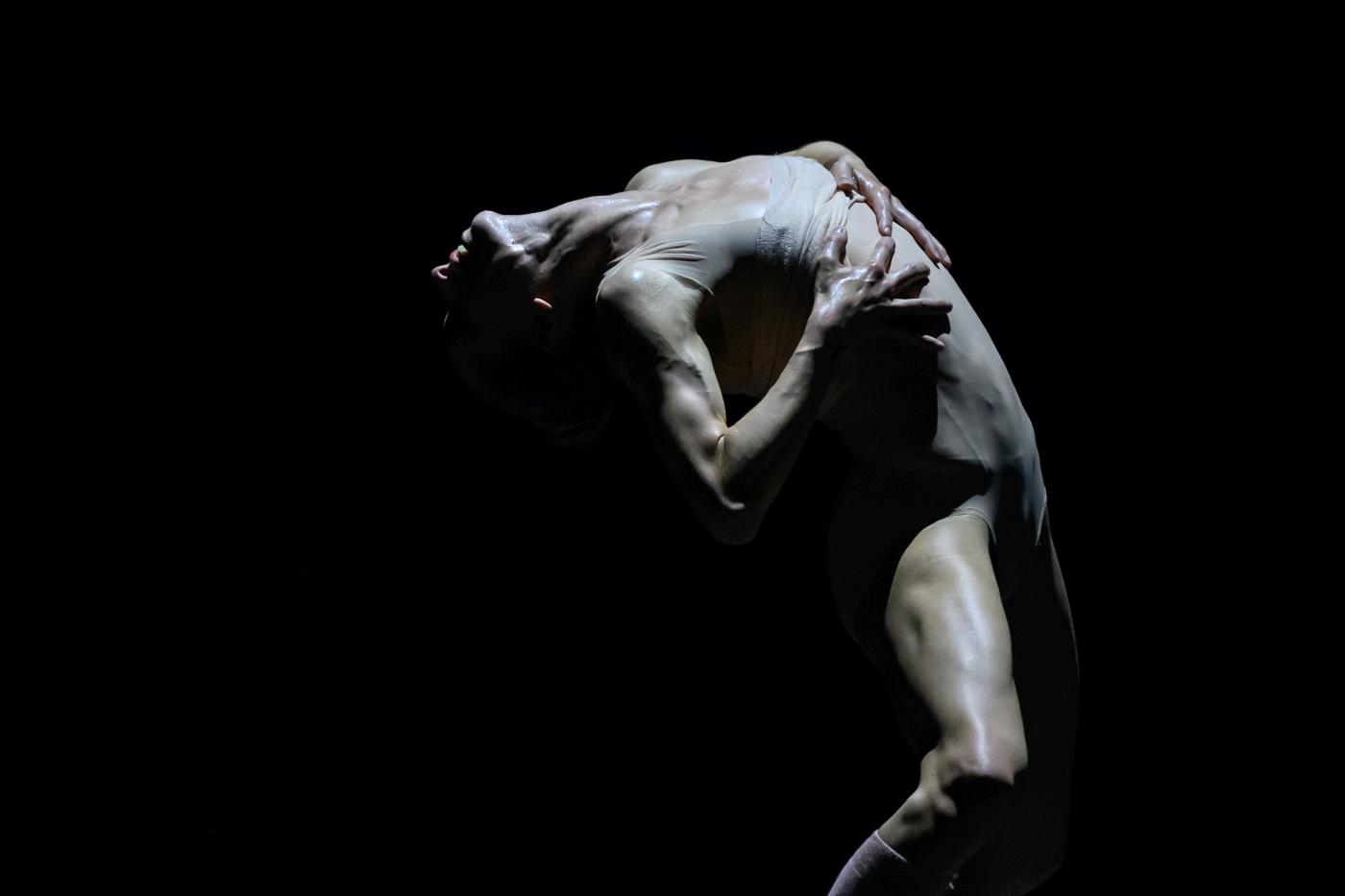
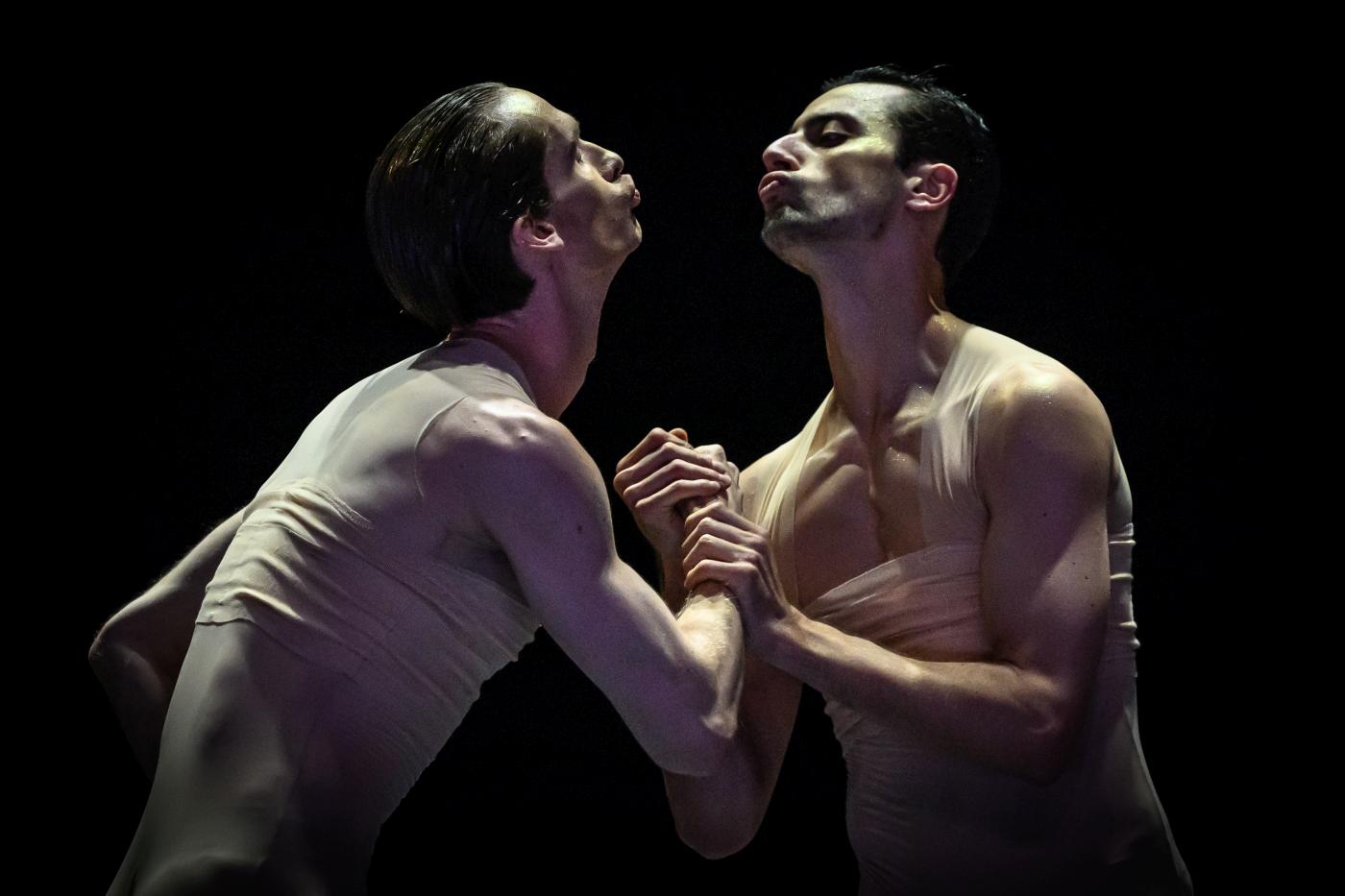 The program didn’t present the three pieces in chronological order but sandwiched Autodance between Within the Golden Hour and Vers un Pays Sage. Maillot would have been the winner of the evening if some visitors hadn’t left the auditorium after Autodance.
The program didn’t present the three pieces in chronological order but sandwiched Autodance between Within the Golden Hour and Vers un Pays Sage. Maillot would have been the winner of the evening if some visitors hadn’t left the auditorium after Autodance.
But assuming that Maillot wanted to exemplify the development of the art of dance when assembling the program, aren’t we heading toward complete degeneration on Western stages?
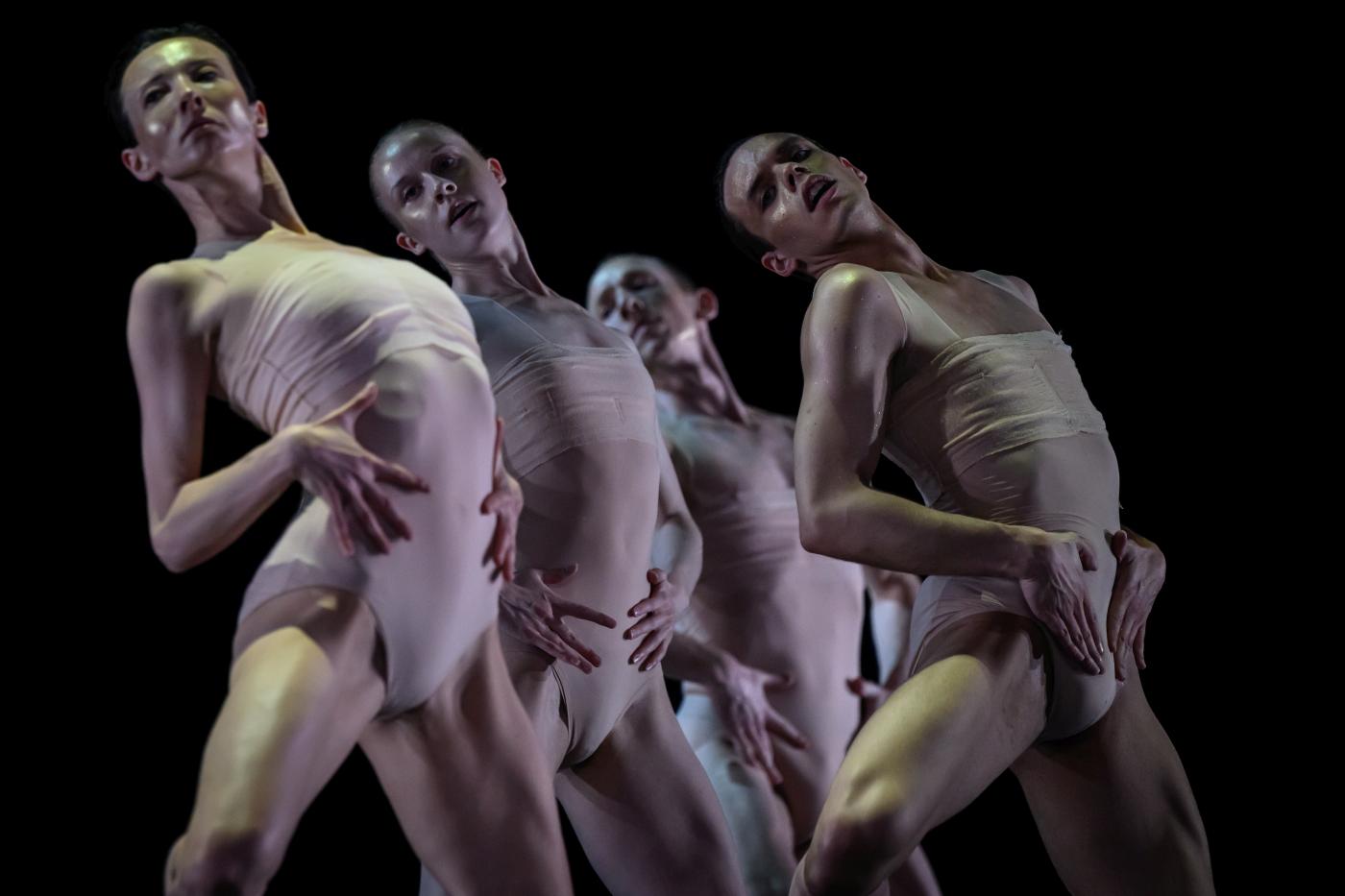
| Links: | Website of Les Ballets de Monte-Carlo | |
| “Vers un Pays Sage” – Jean-Christophe Maillot (video from 2012) | ||
| “Within the Golden Hour” – Christopher Wheeldon (video) | ||
| “Autodance” – Sharon Eyal and Gai Behar (video) | ||
| Photos: | 1. | Ensemble, “Vers un Pays Sage” by Jean-Christophe Maillot, Les Ballets de Monte-Carlo 2024 |
| 2. | Ensemble, “Vers un Pays Sage” by Jean-Christophe Maillot, Les Ballets de Monte-Carlo 2024 | |
| 3. | Ensemble, “Vers un Pays Sage” by Jean-Christophe Maillot, Les Ballets de Monte-Carlo 2024 | |
| 4. | Ensemble, “Vers un Pays Sage” by Jean-Christophe Maillot, Les Ballets de Monte-Carlo 2024 | |
| 5. | Ensemble, “Vers un Pays Sage” by Jean-Christophe Maillot, Les Ballets de Monte-Carlo 2024 | |
| 6. | Ensemble, “Within the Golden Hour” by Christopher Wheeldon, Les Ballets de Monte-Carlo 2024 | |
| 7. | Ensemble, “Within the Golden Hour” by Christopher Wheeldon, Les Ballets de Monte-Carlo 2024 | |
| 8. | Ensemble, “Within the Golden Hour” by Christopher Wheeldon, Les Ballets de Monte-Carlo 2024 | |
| 9. | Ensemble, “Within the Golden Hour” by Christopher Wheeldon, Les Ballets de Monte-Carlo 2024 | |
| 10. | Ensemble, “Autodance” by Sharon Eyal and Gai Behar, Les Ballets de Monte-Carlo 2024 | |
| 11. | Ensemble, “Autodance” by Sharon Eyal and Gai Behar, Les Ballets de Monte-Carlo 2024 | |
| 12. | Ensemble, “Autodance” by Sharon Eyal and Gai Behar, Les Ballets de Monte-Carlo 2024 | |
| 13. | Ensemble, “Autodance” by Sharon Eyal and Gai Behar, Les Ballets de Monte-Carlo 2024 | |
| 14. | Ensemble, “Autodance” by Sharon Eyal and Gai Behar, Les Ballets de Monte-Carlo 2024 | |
| all photos © Alice Blangero | ||
| Editing: | Kayla Kauffman |
